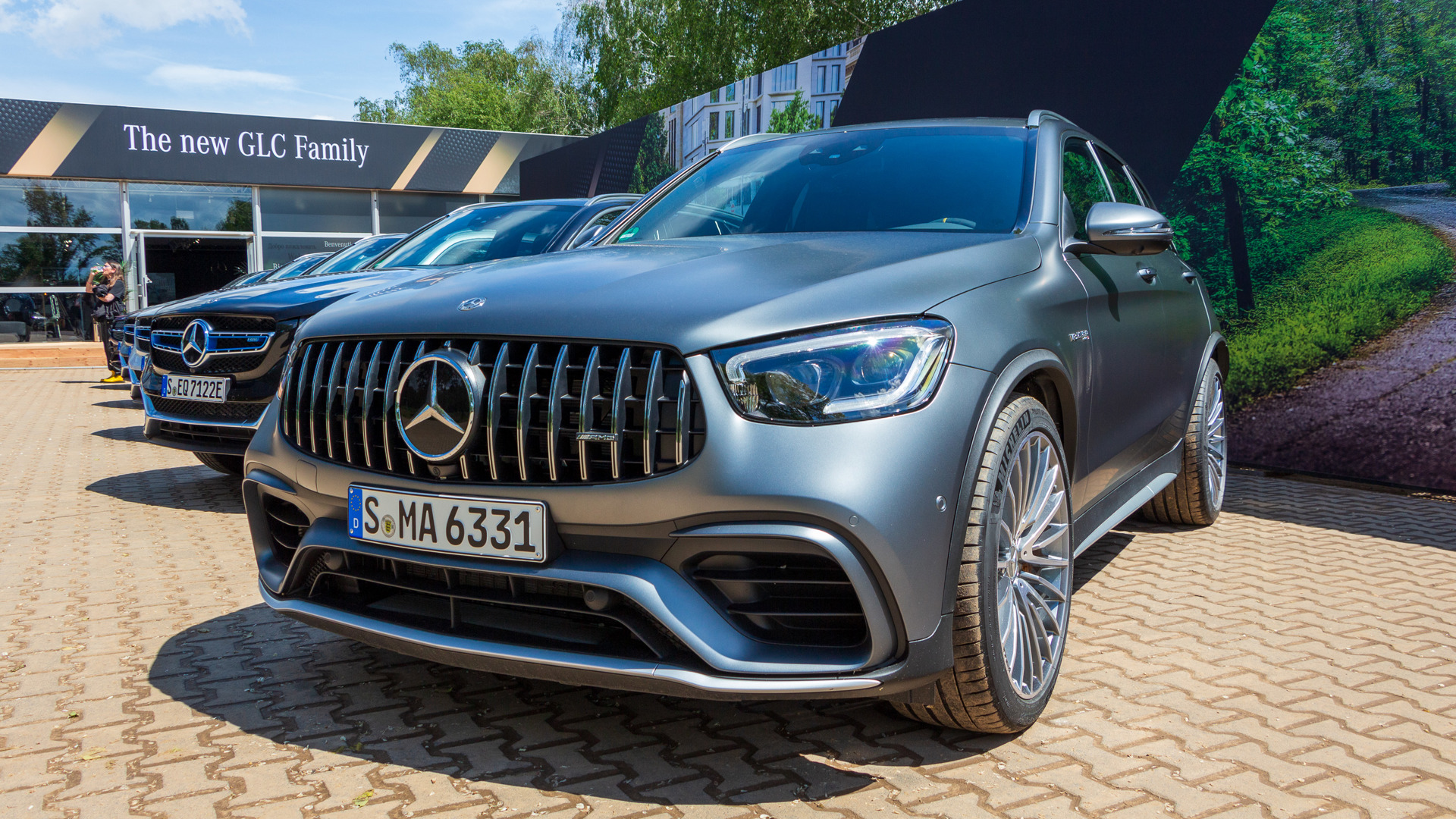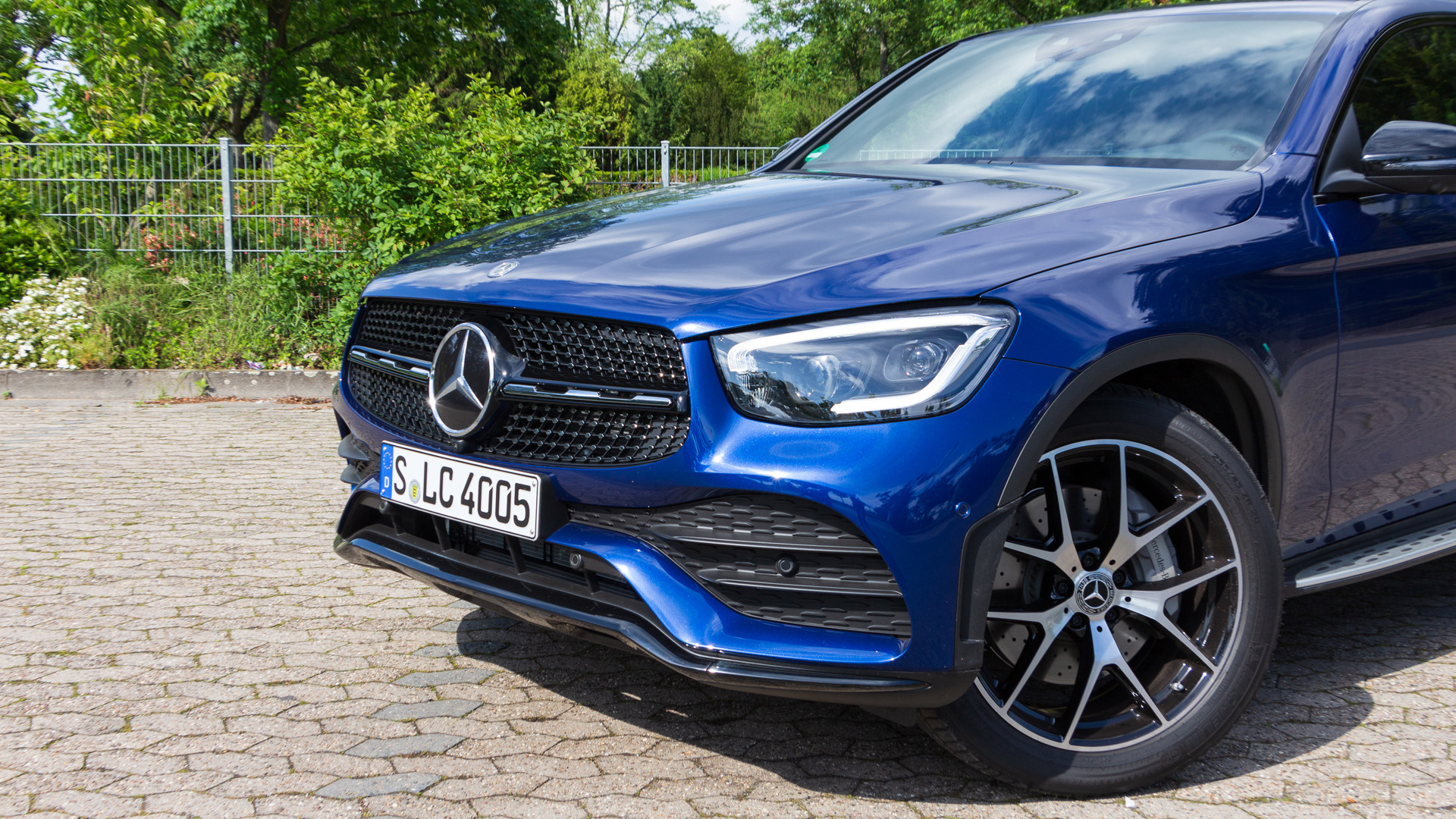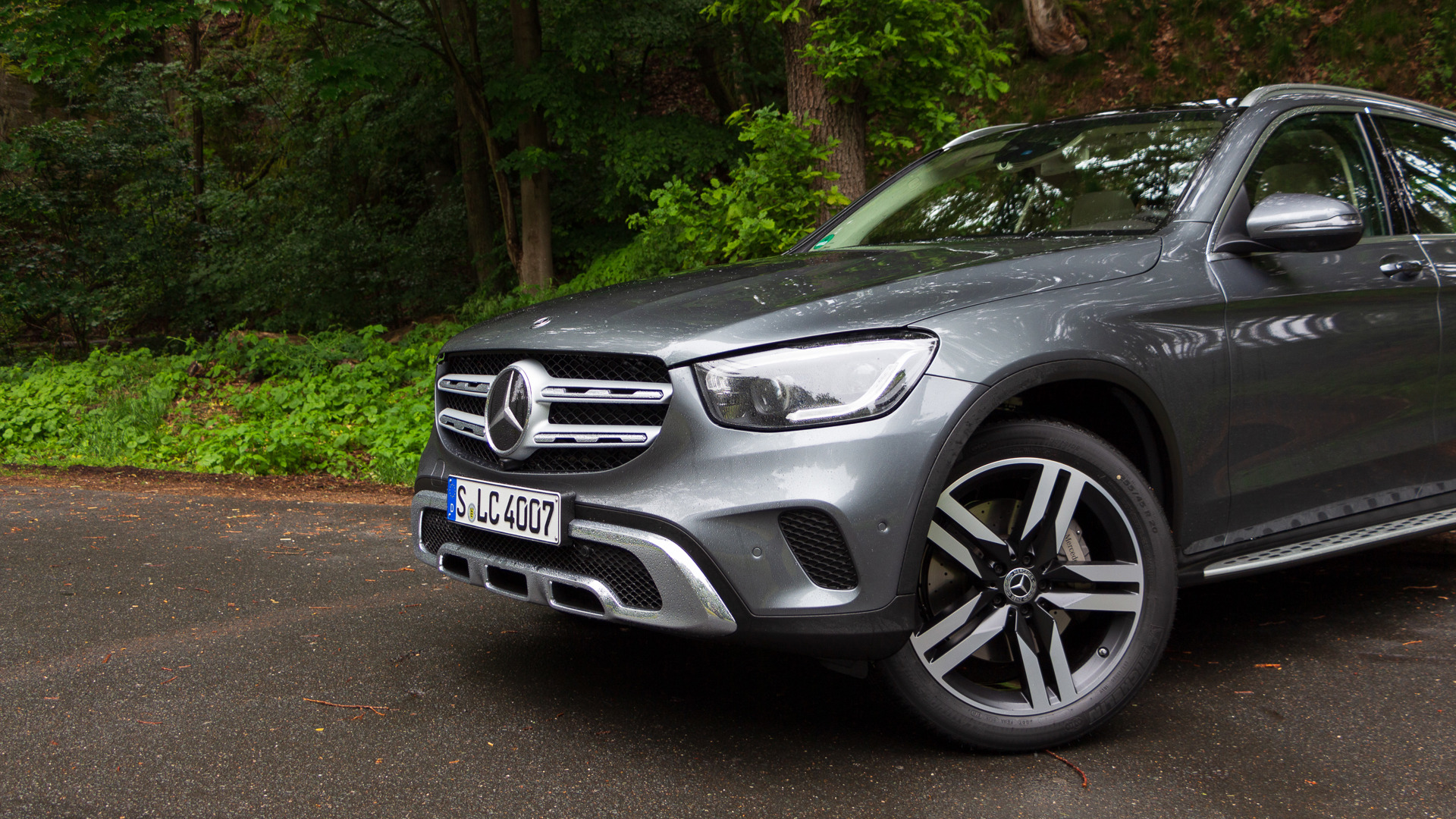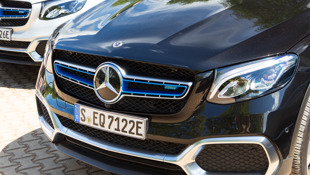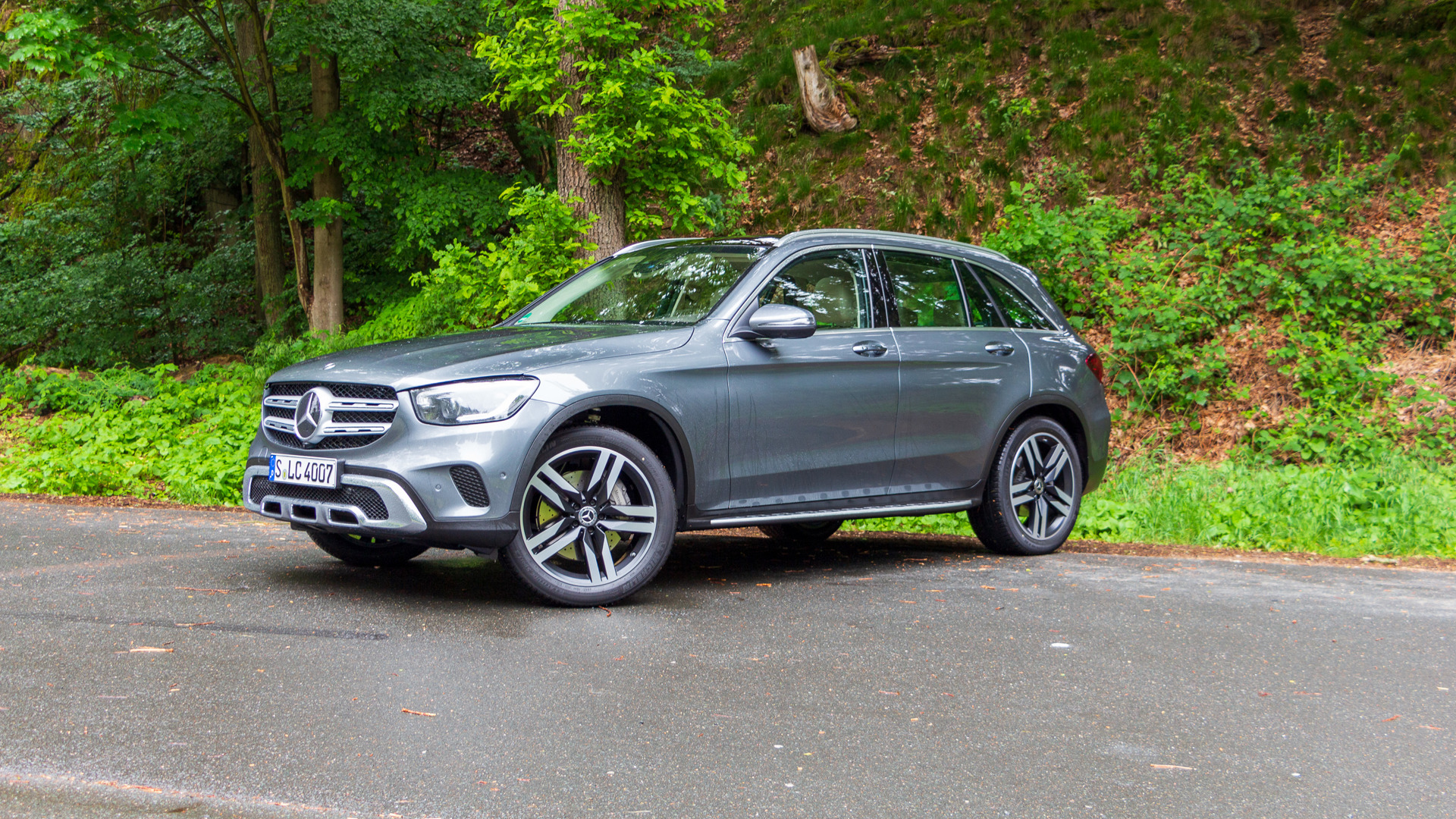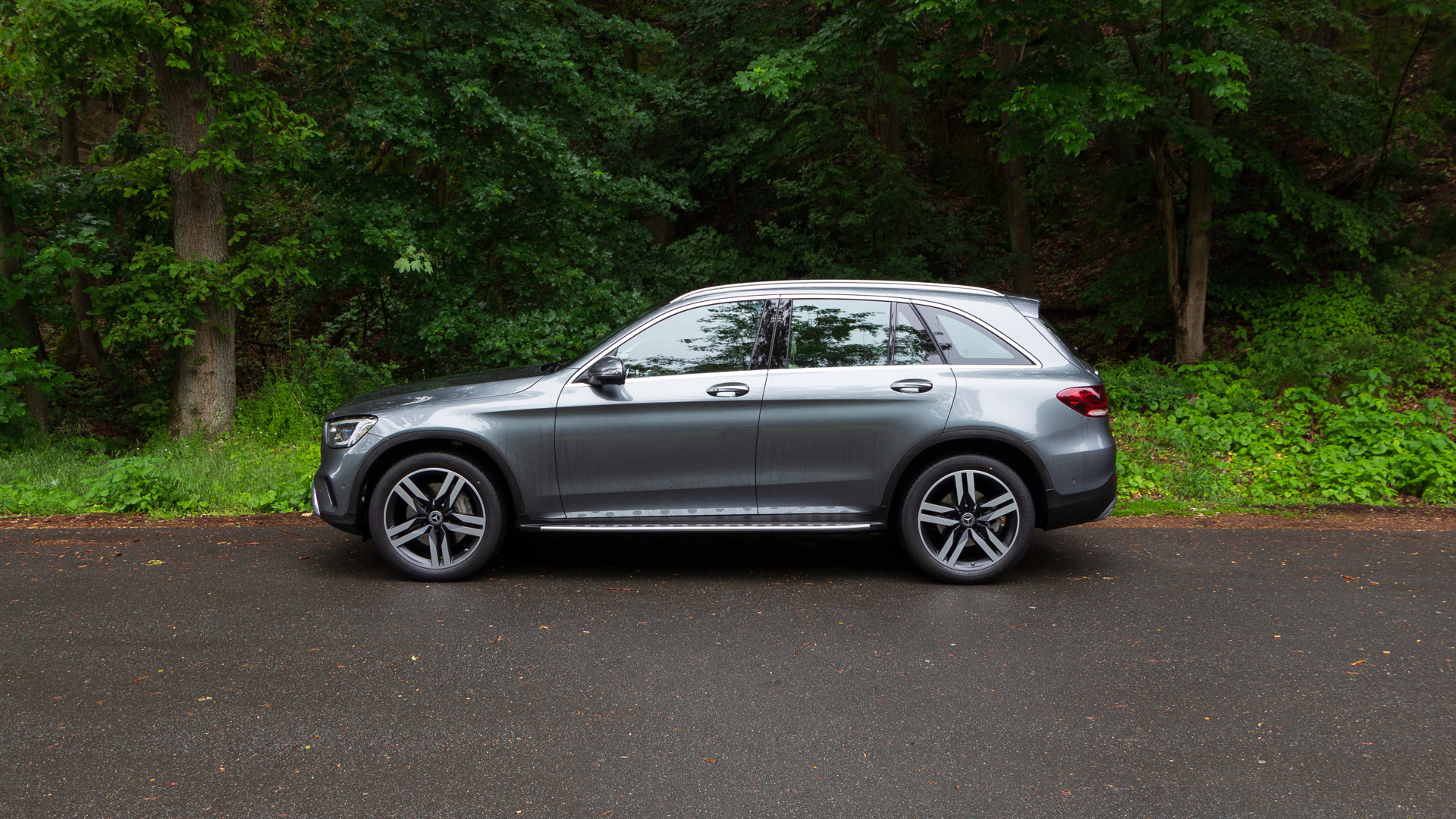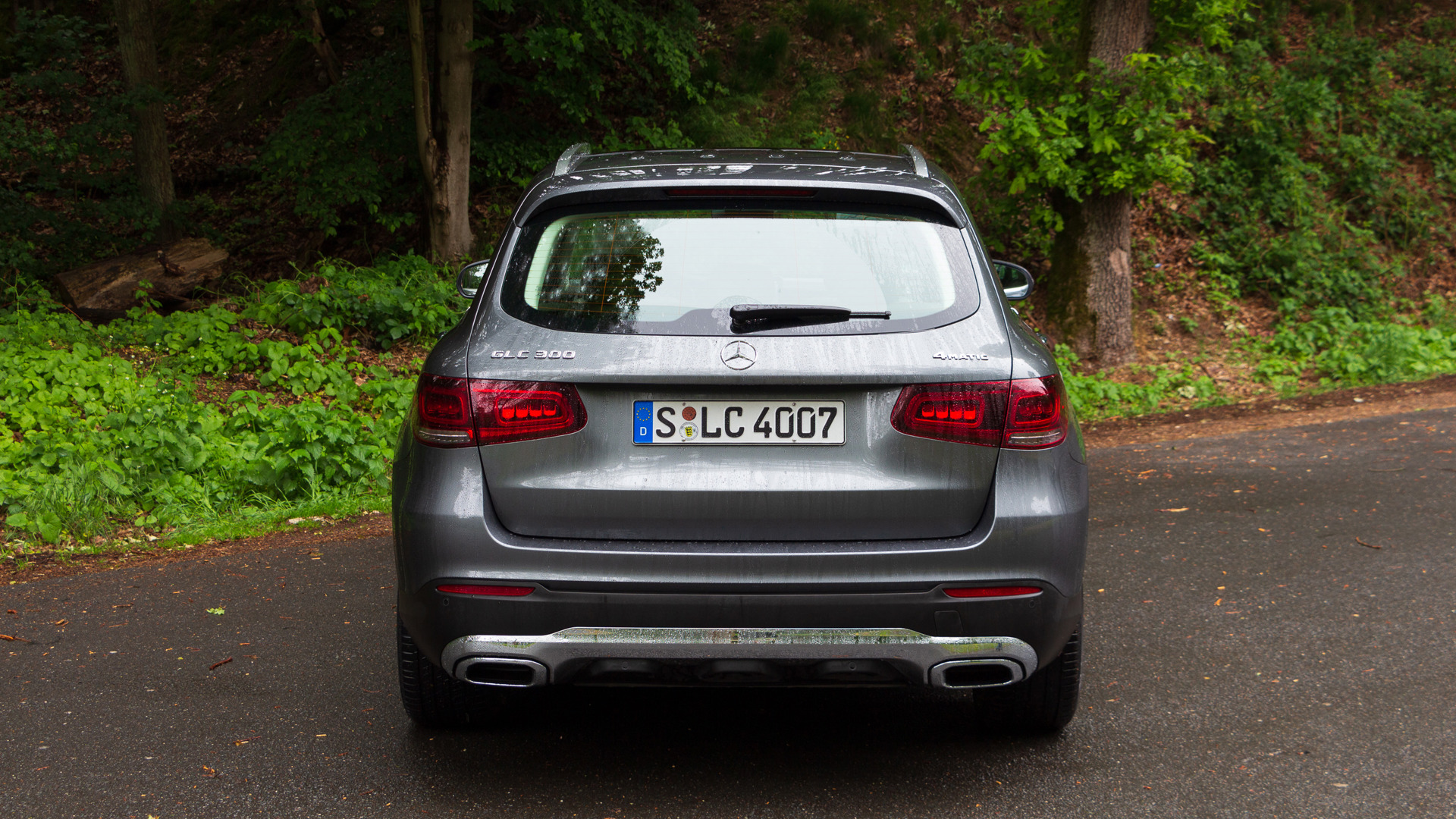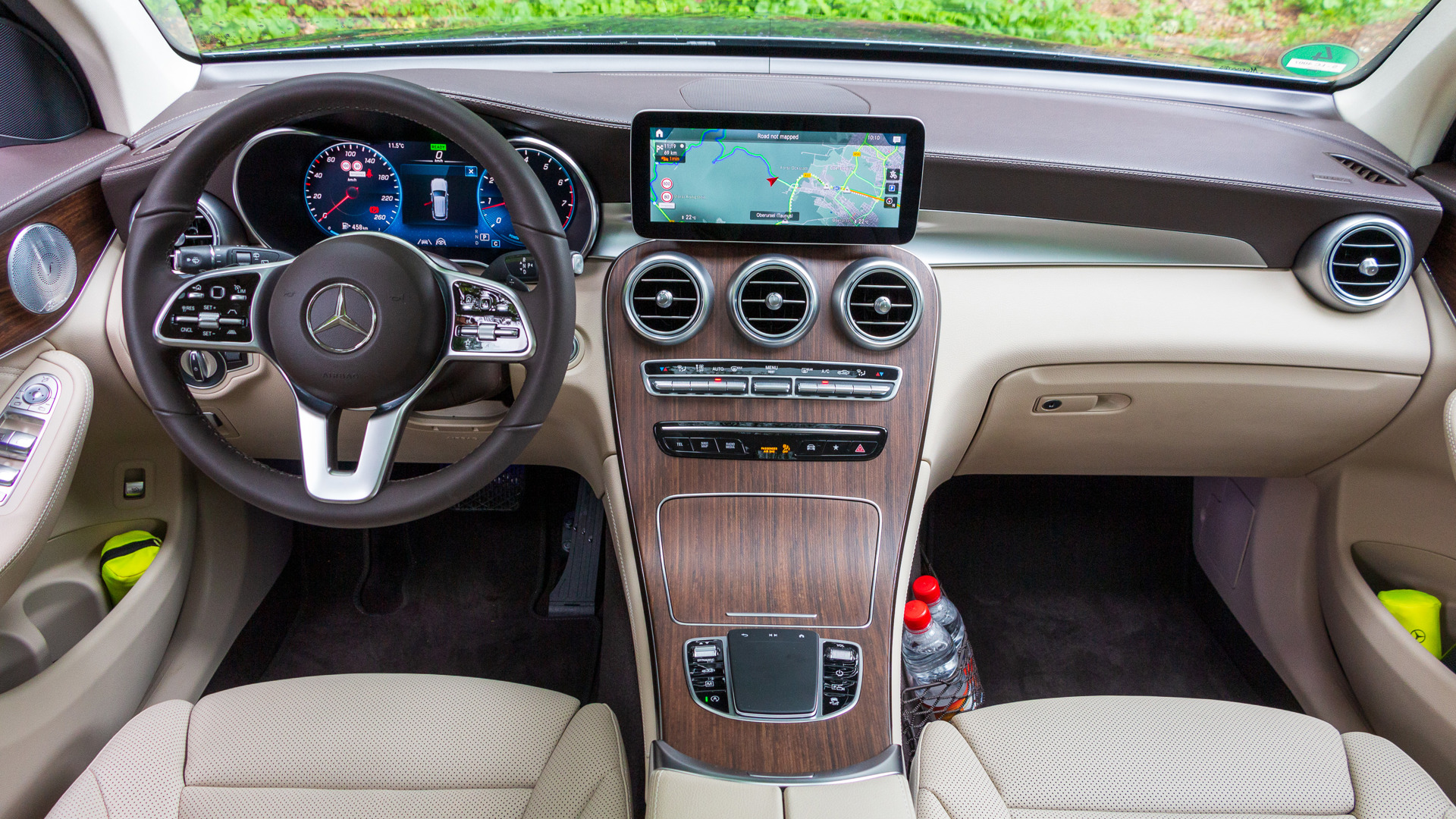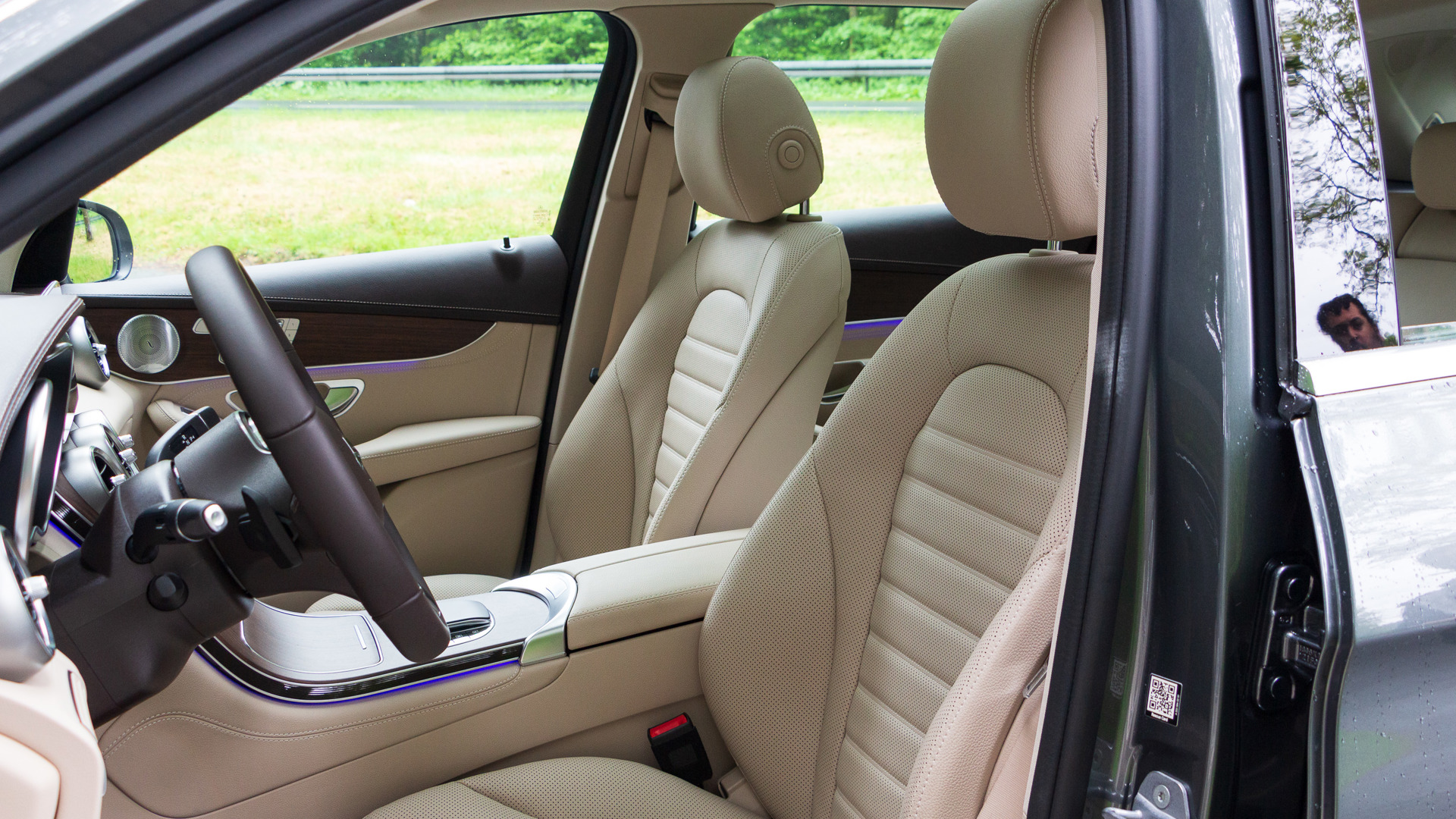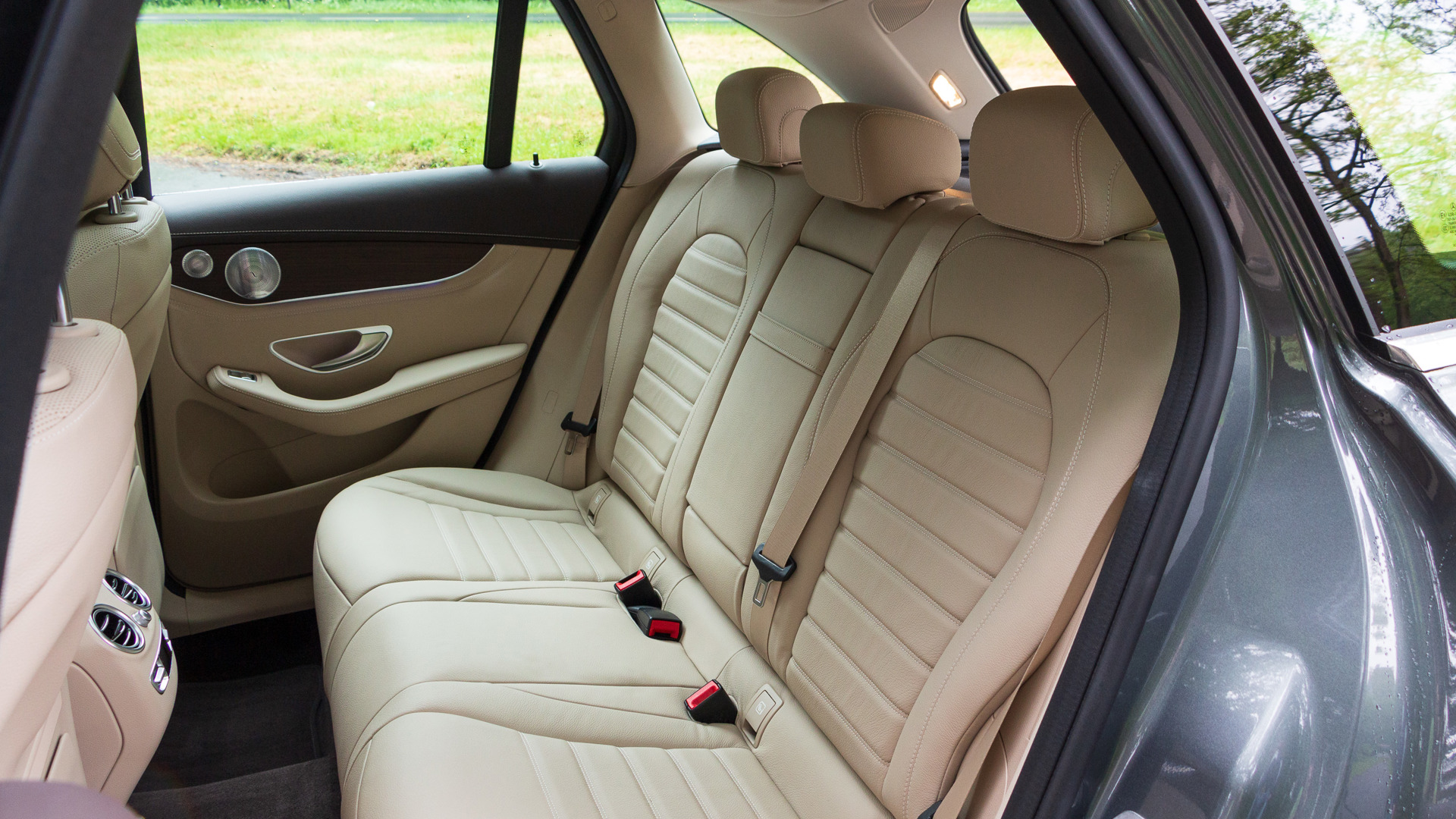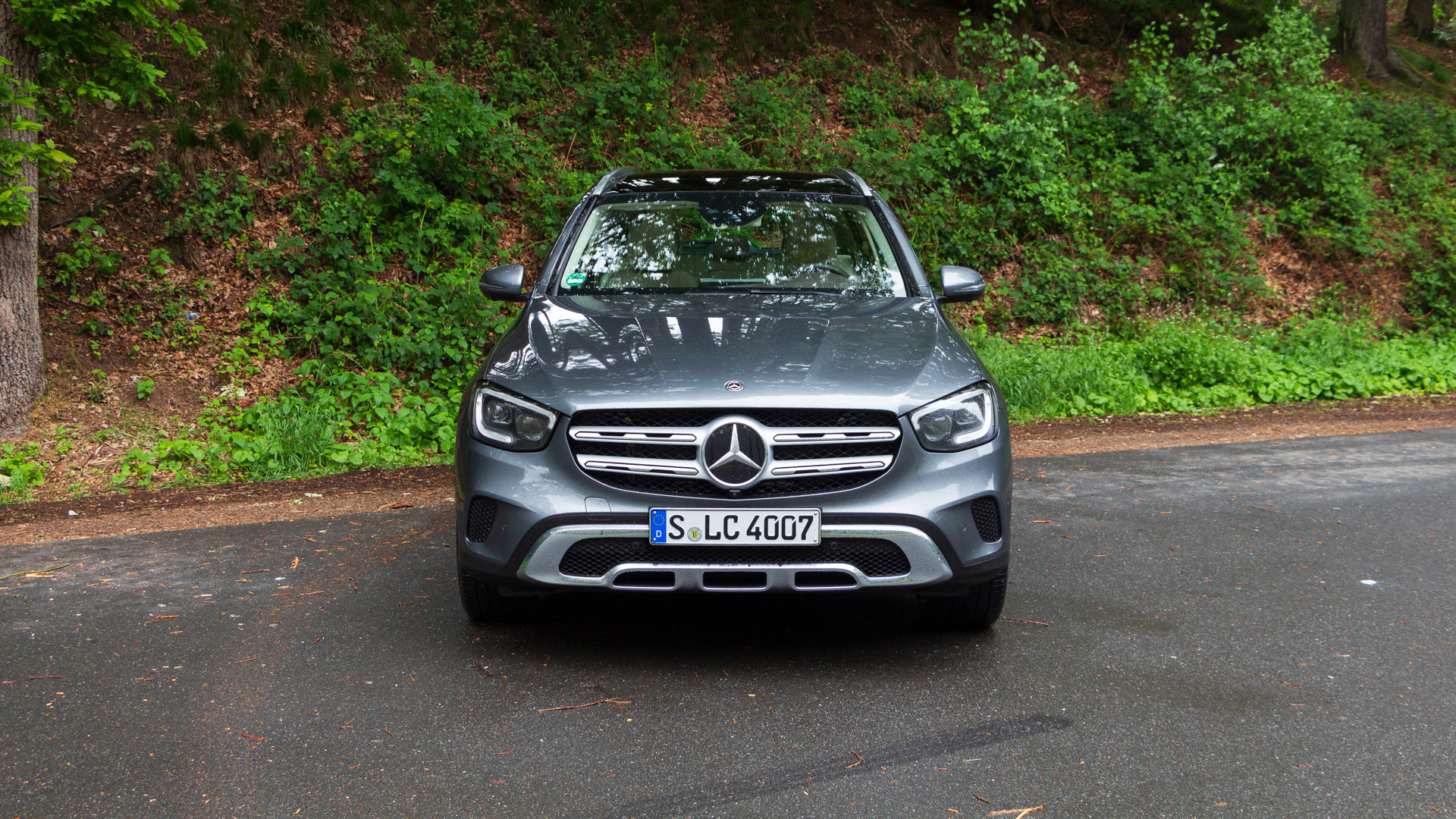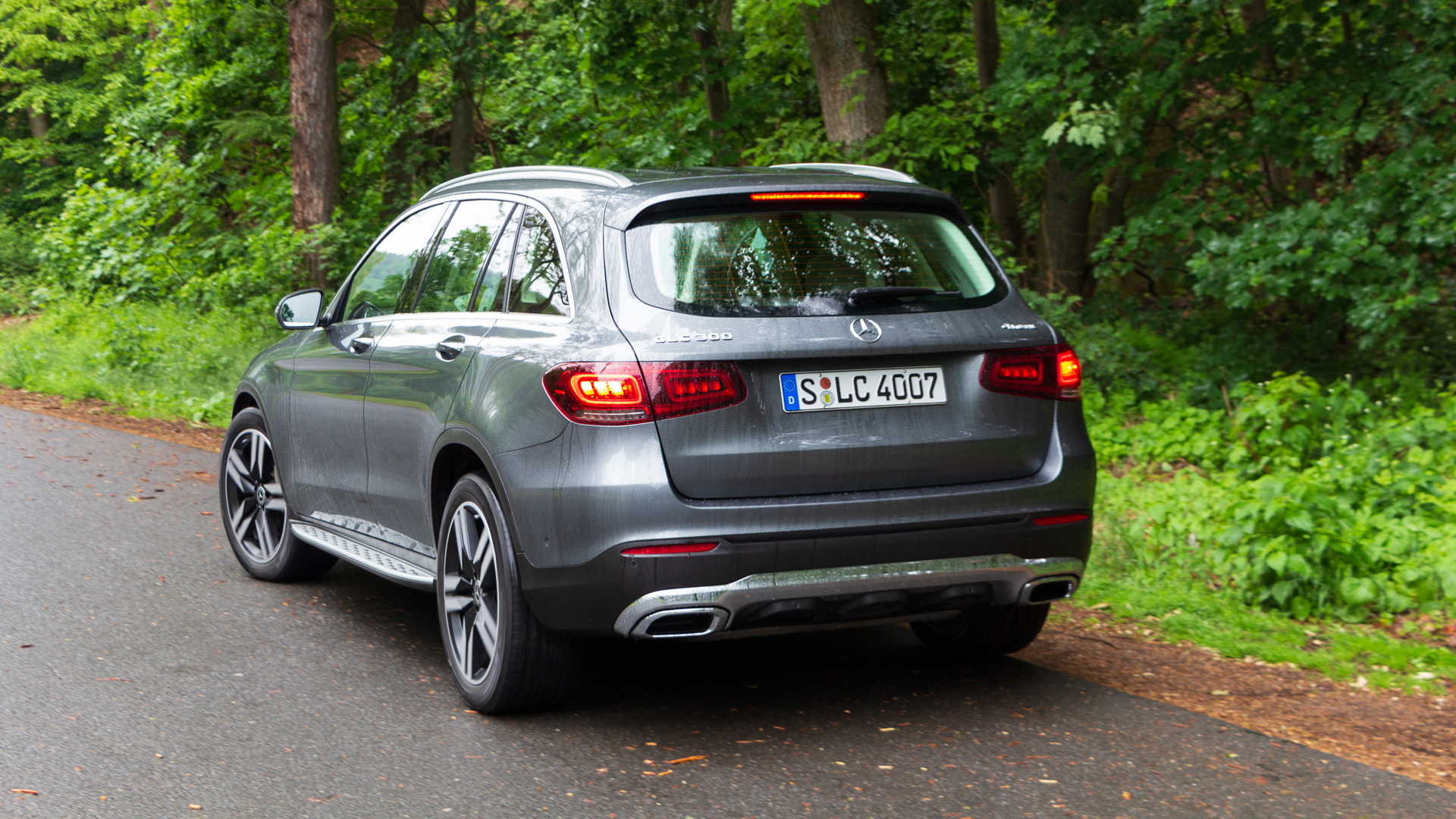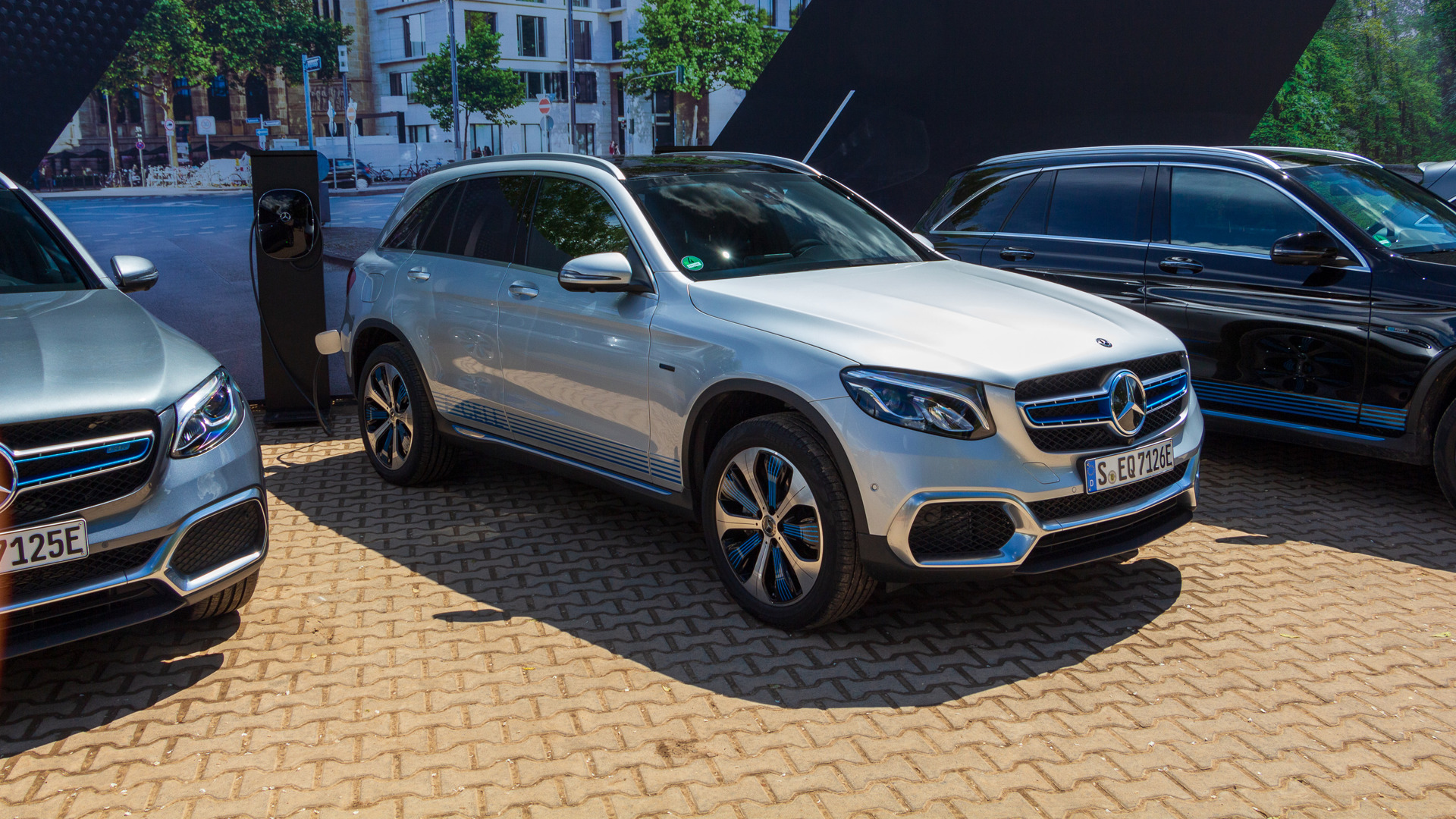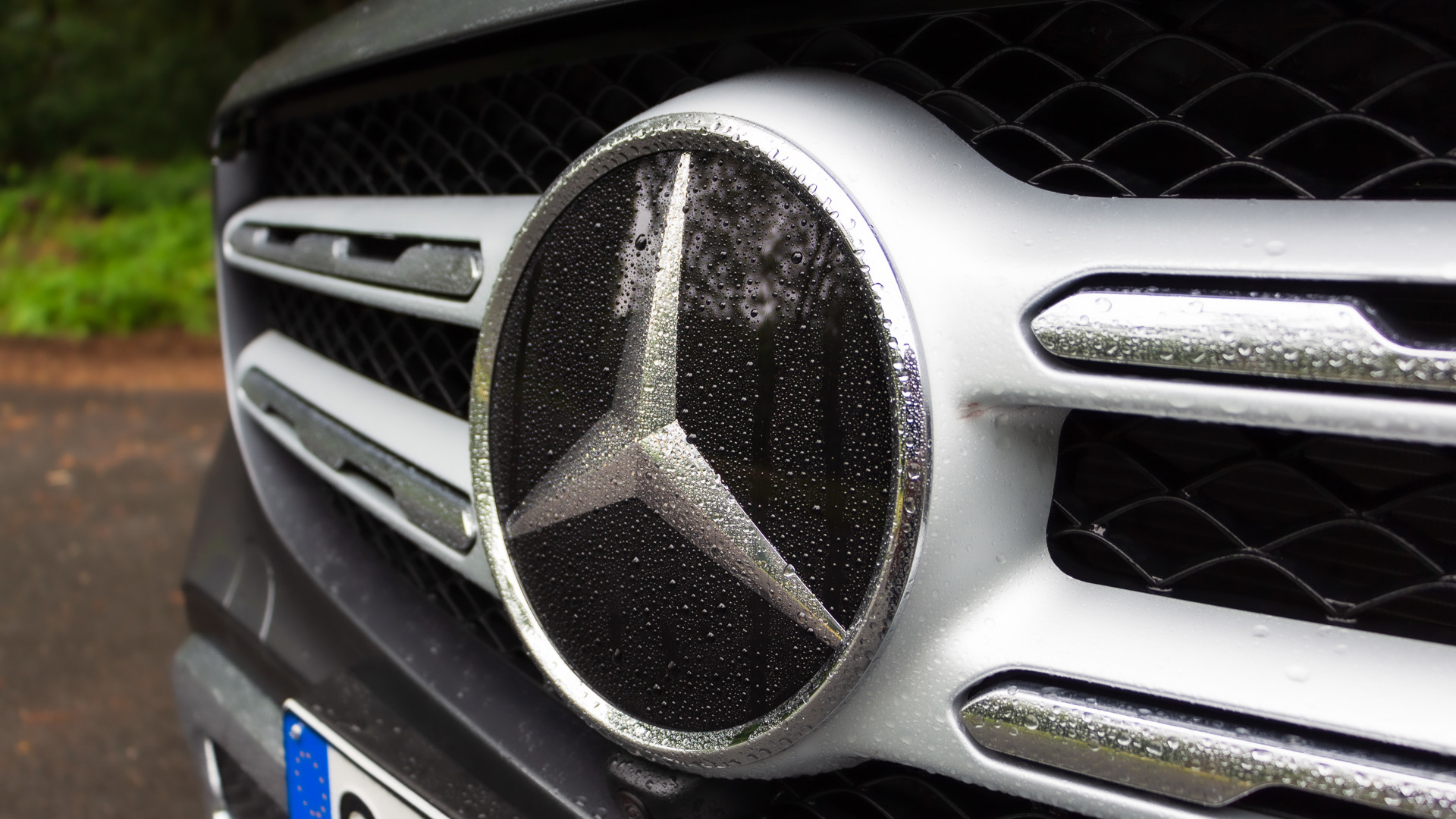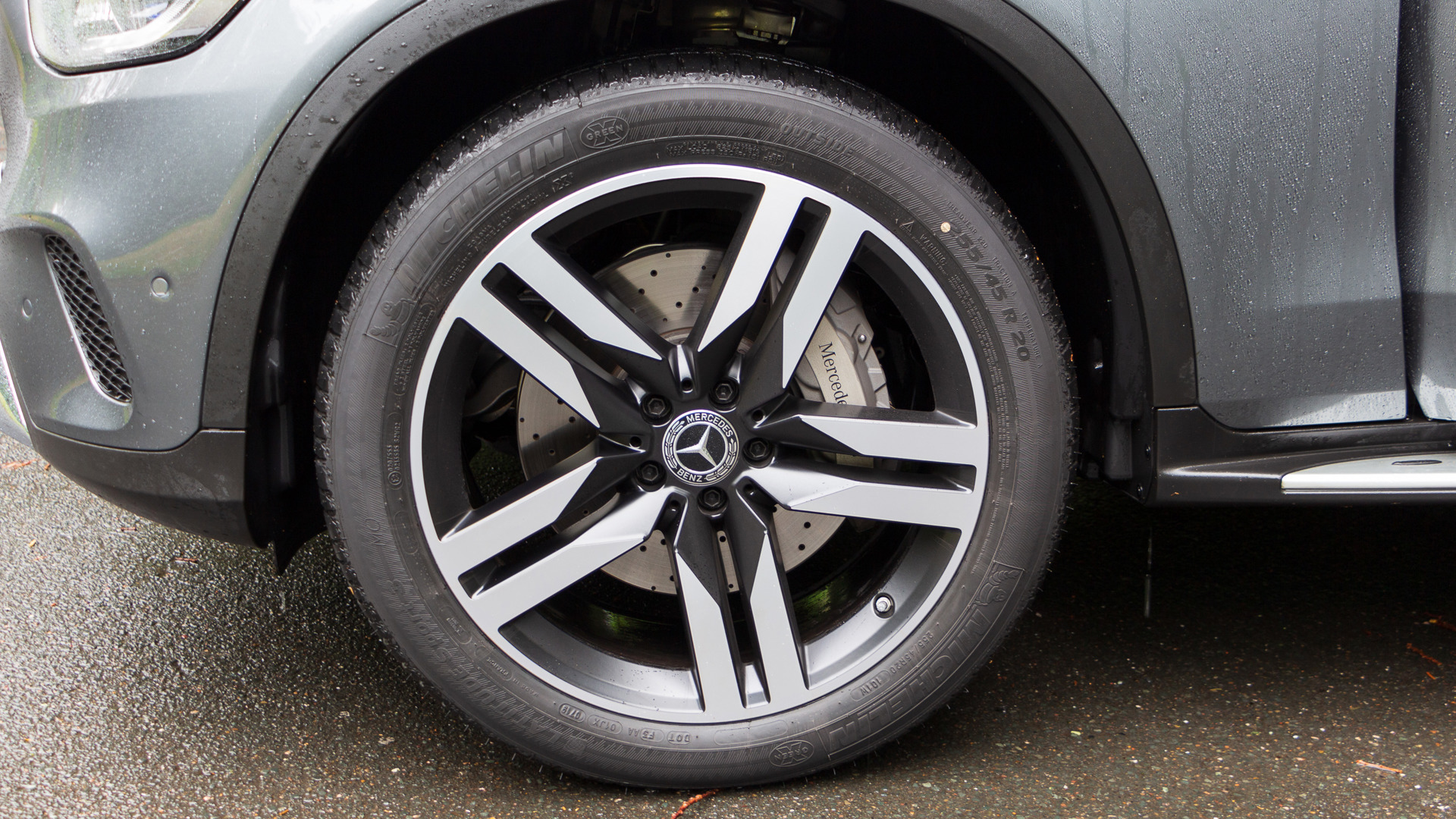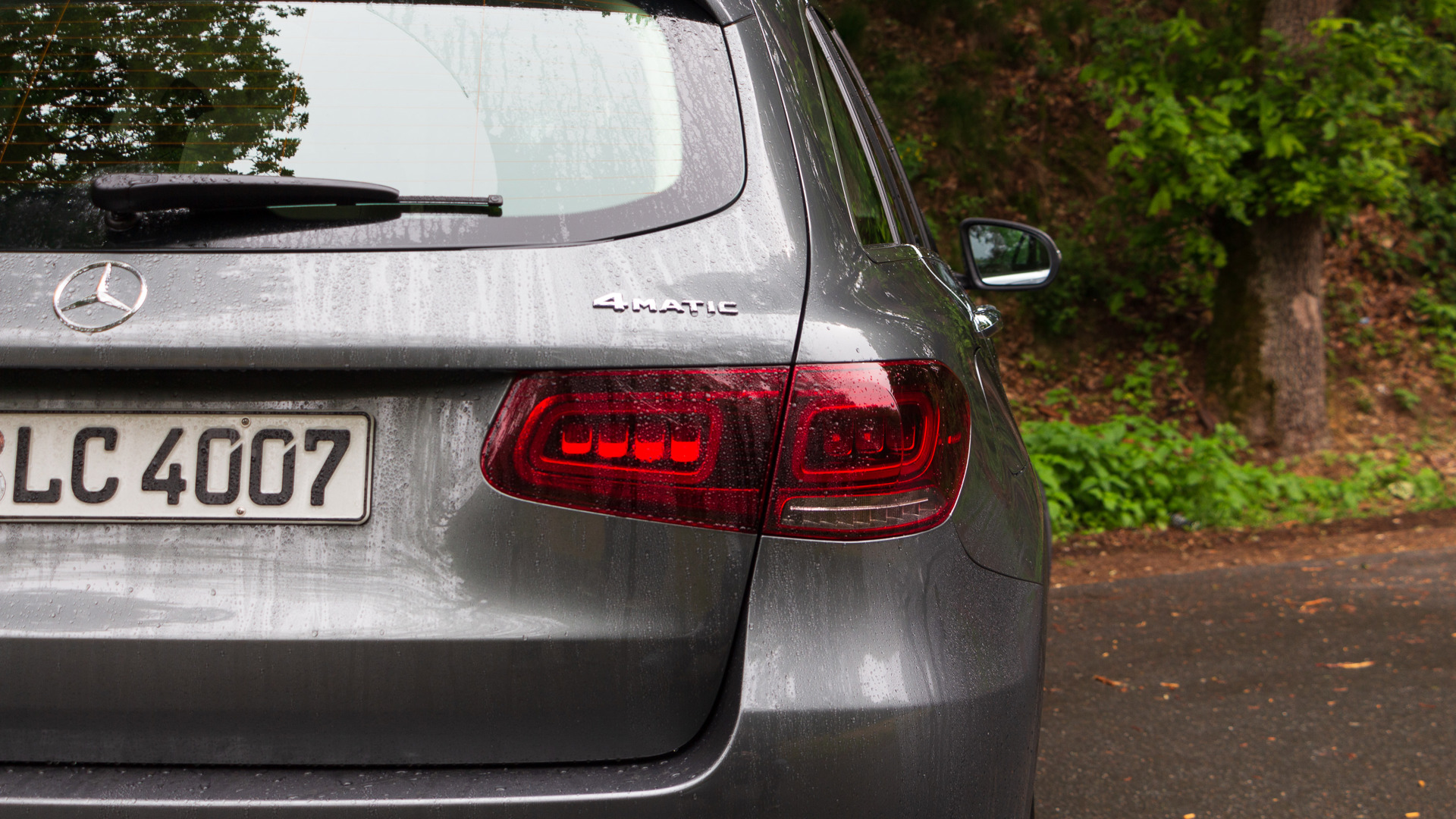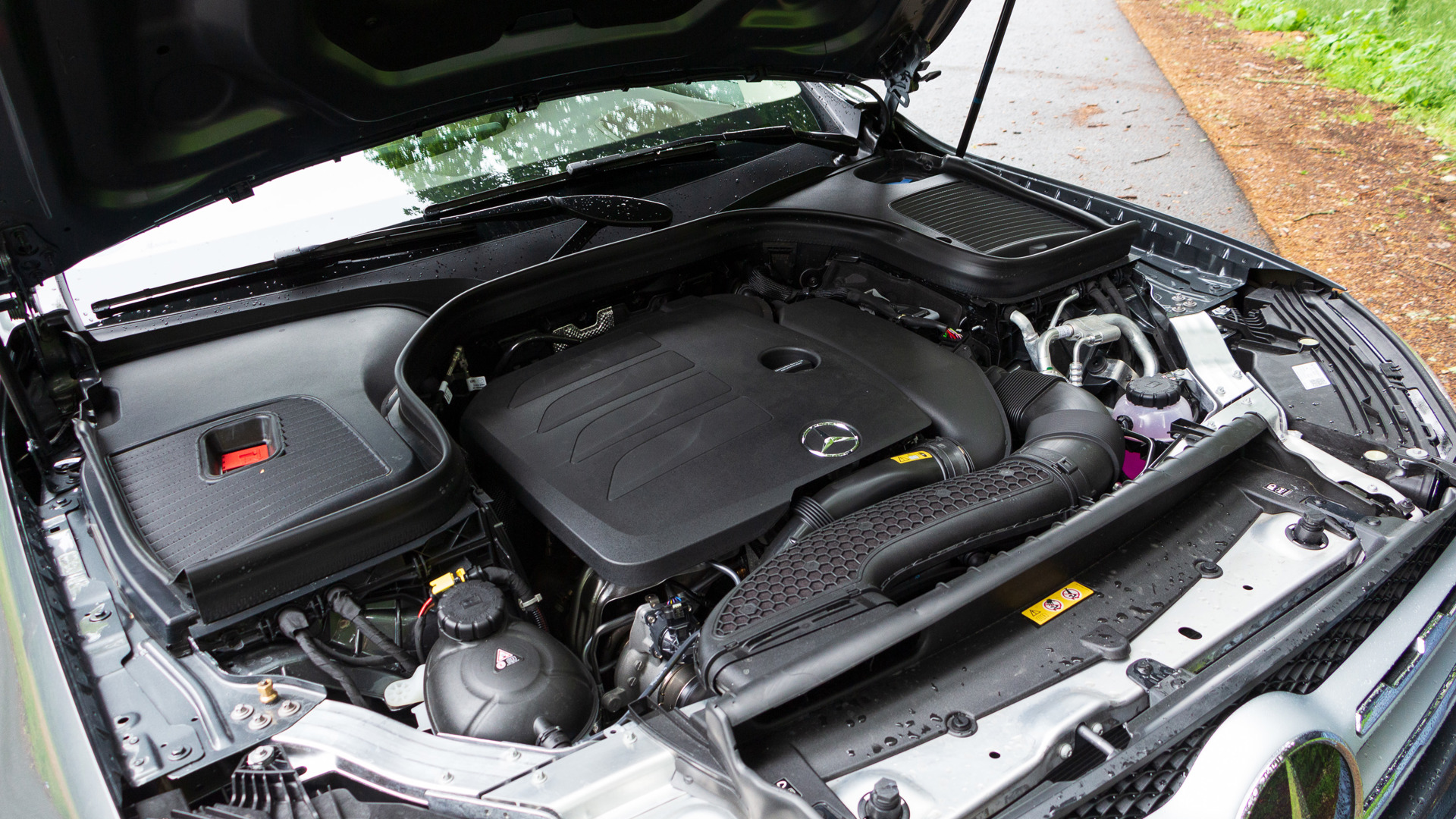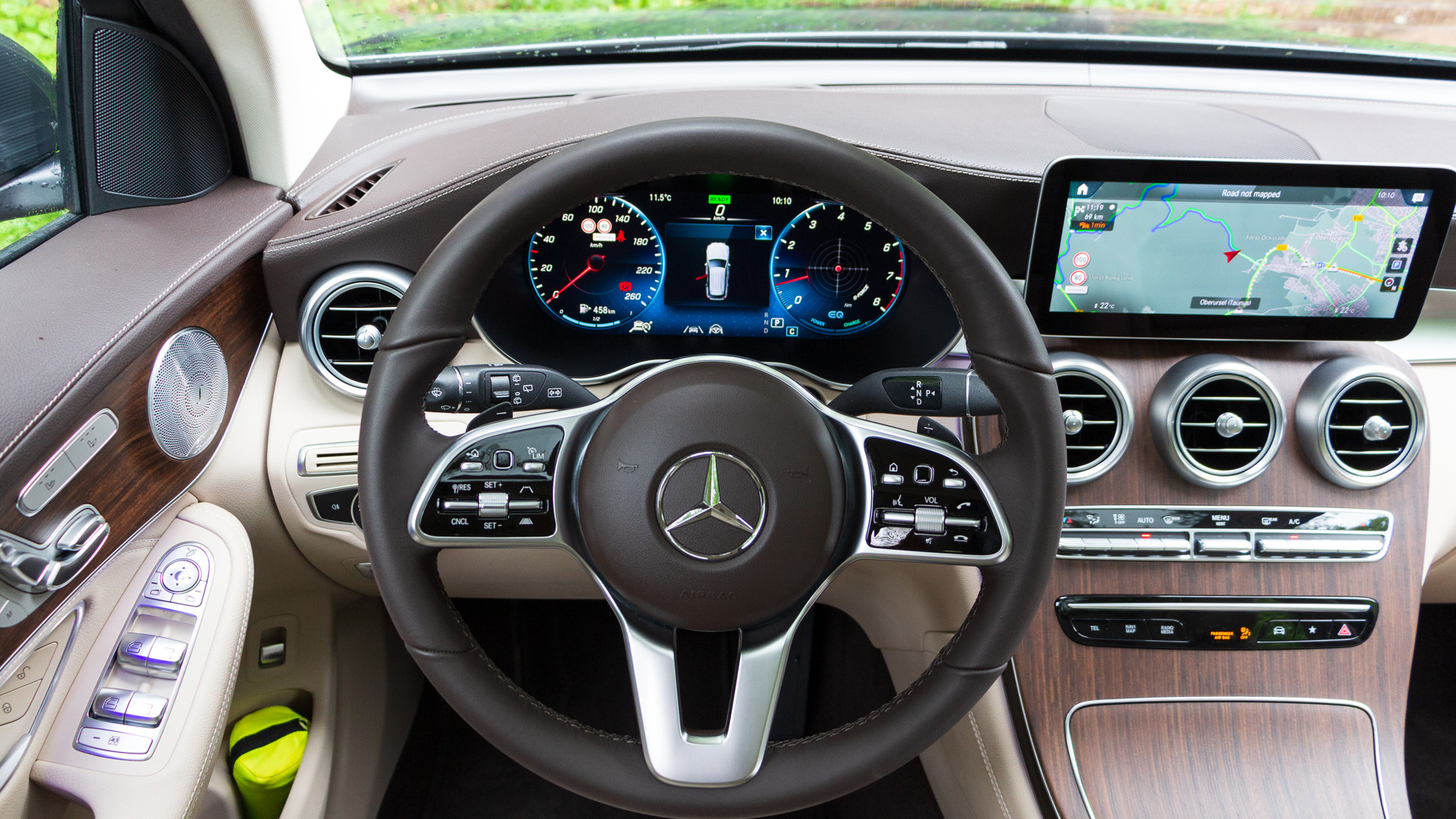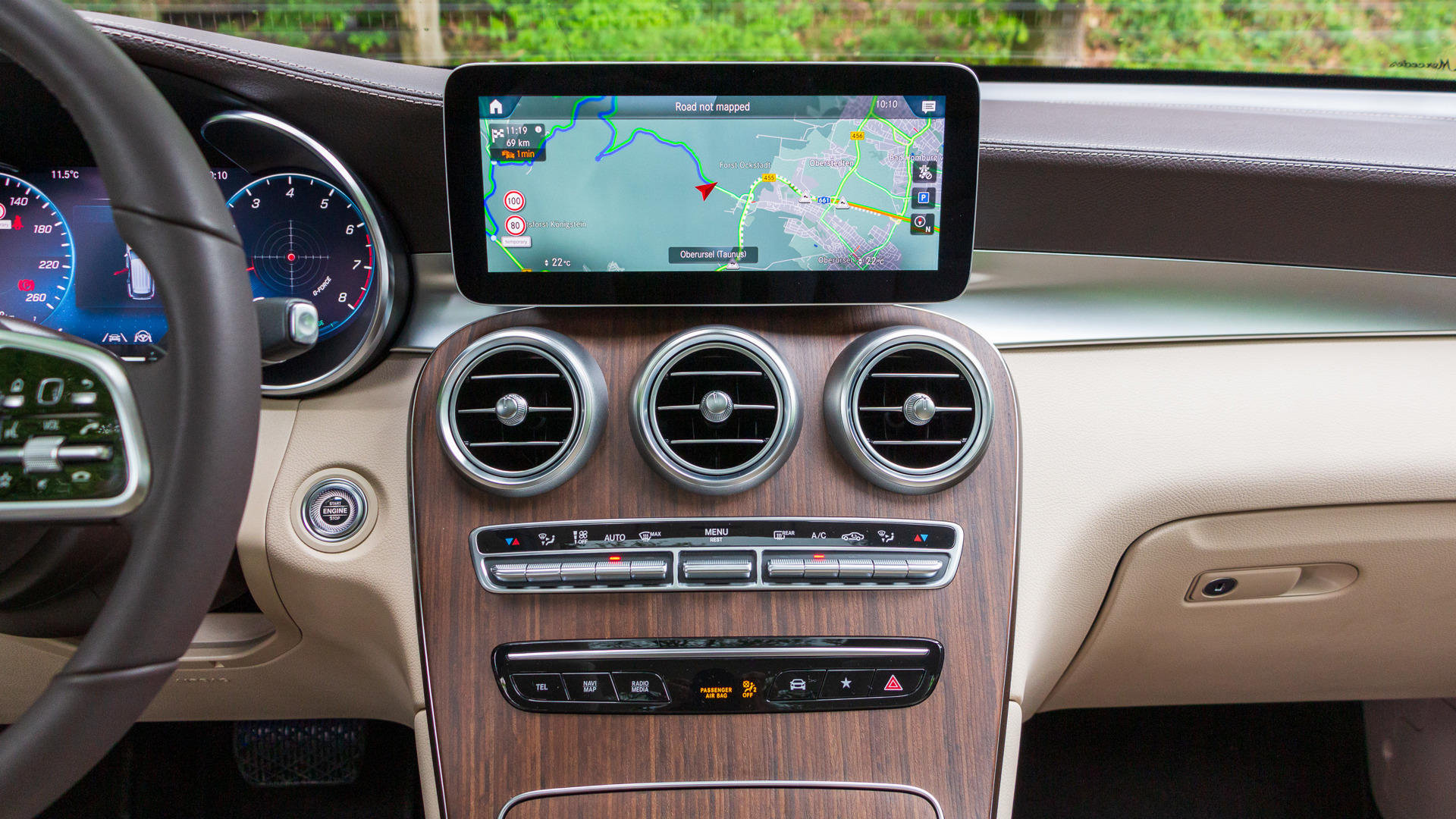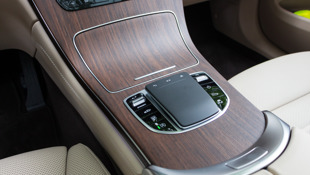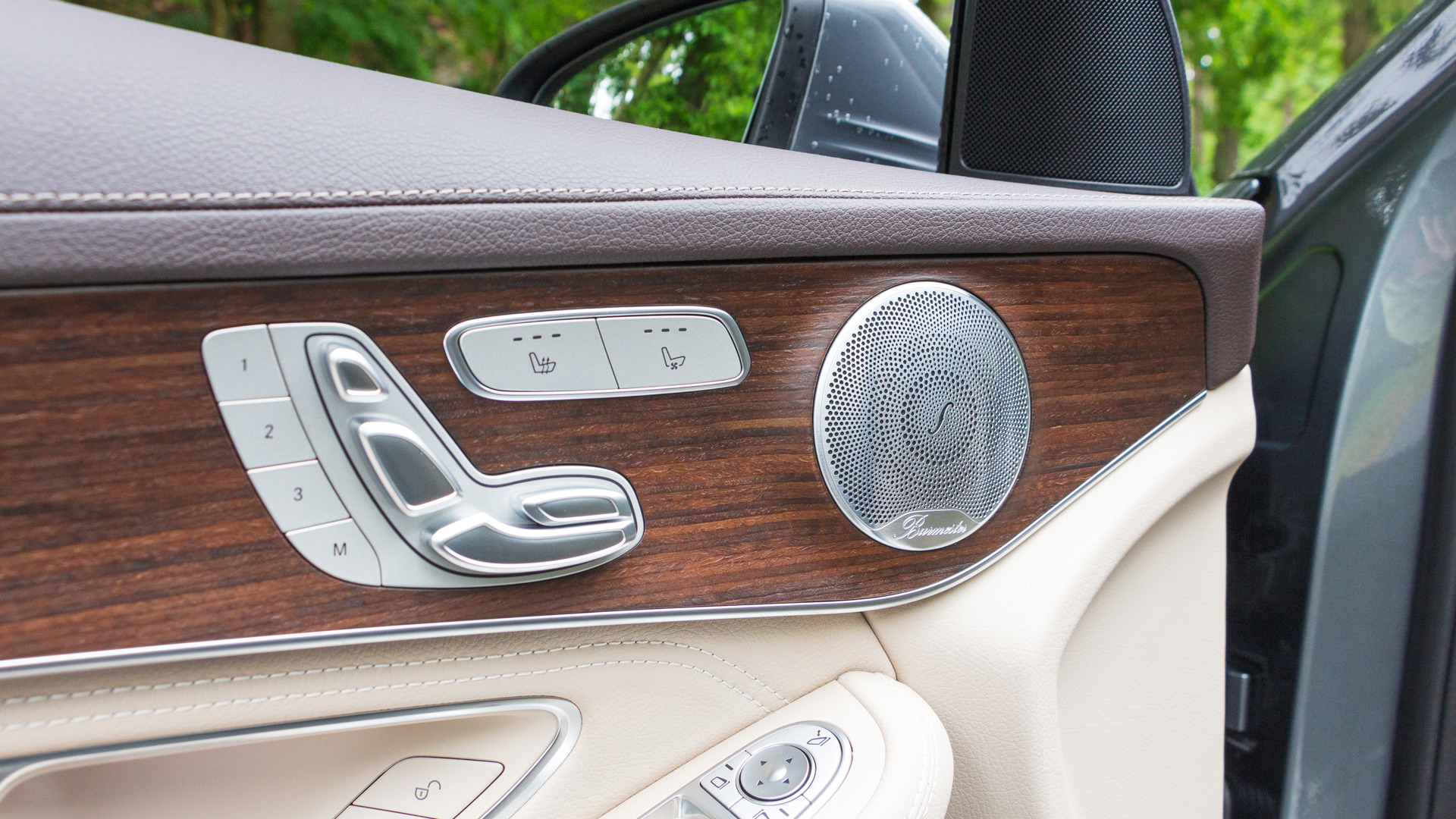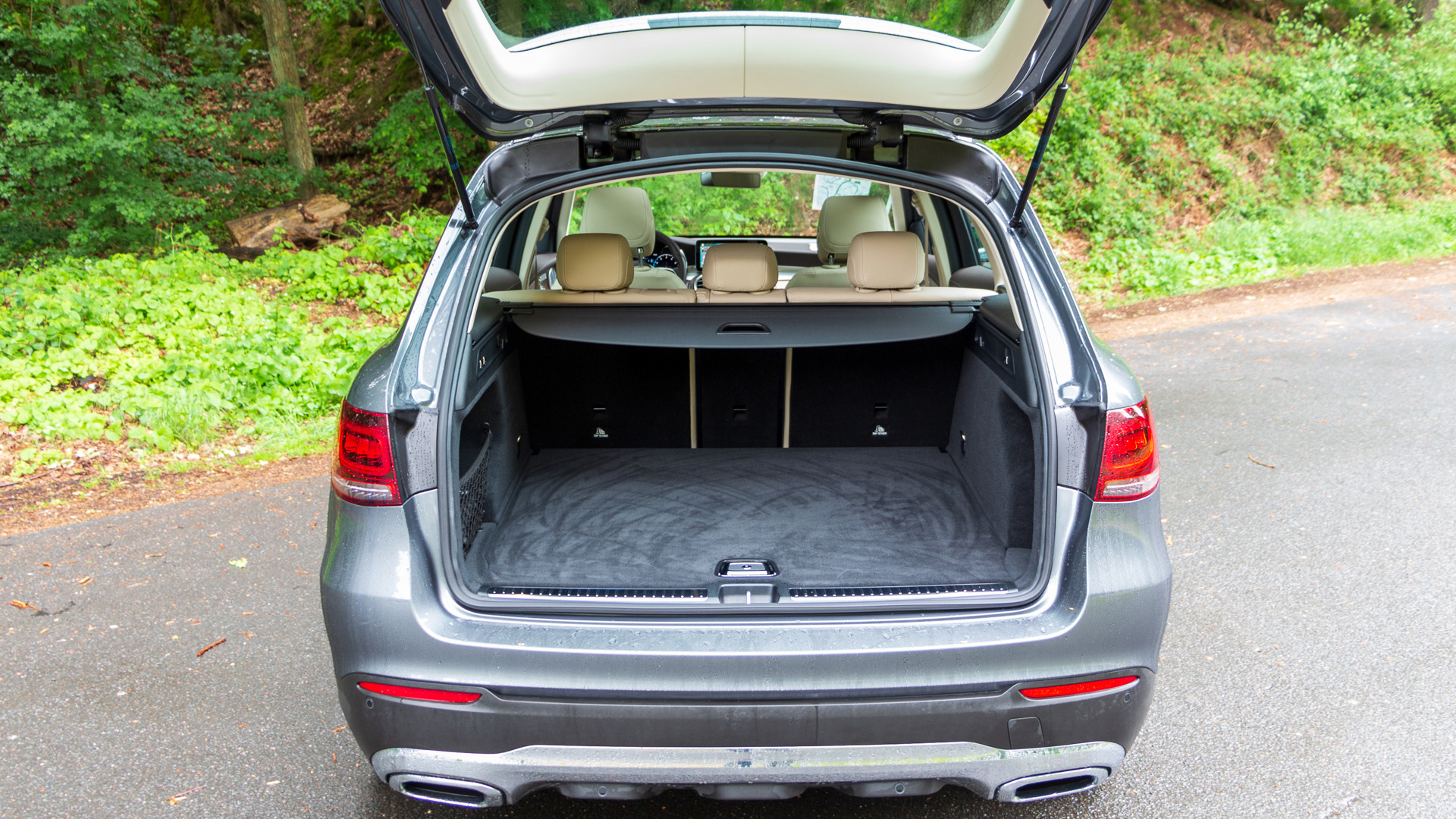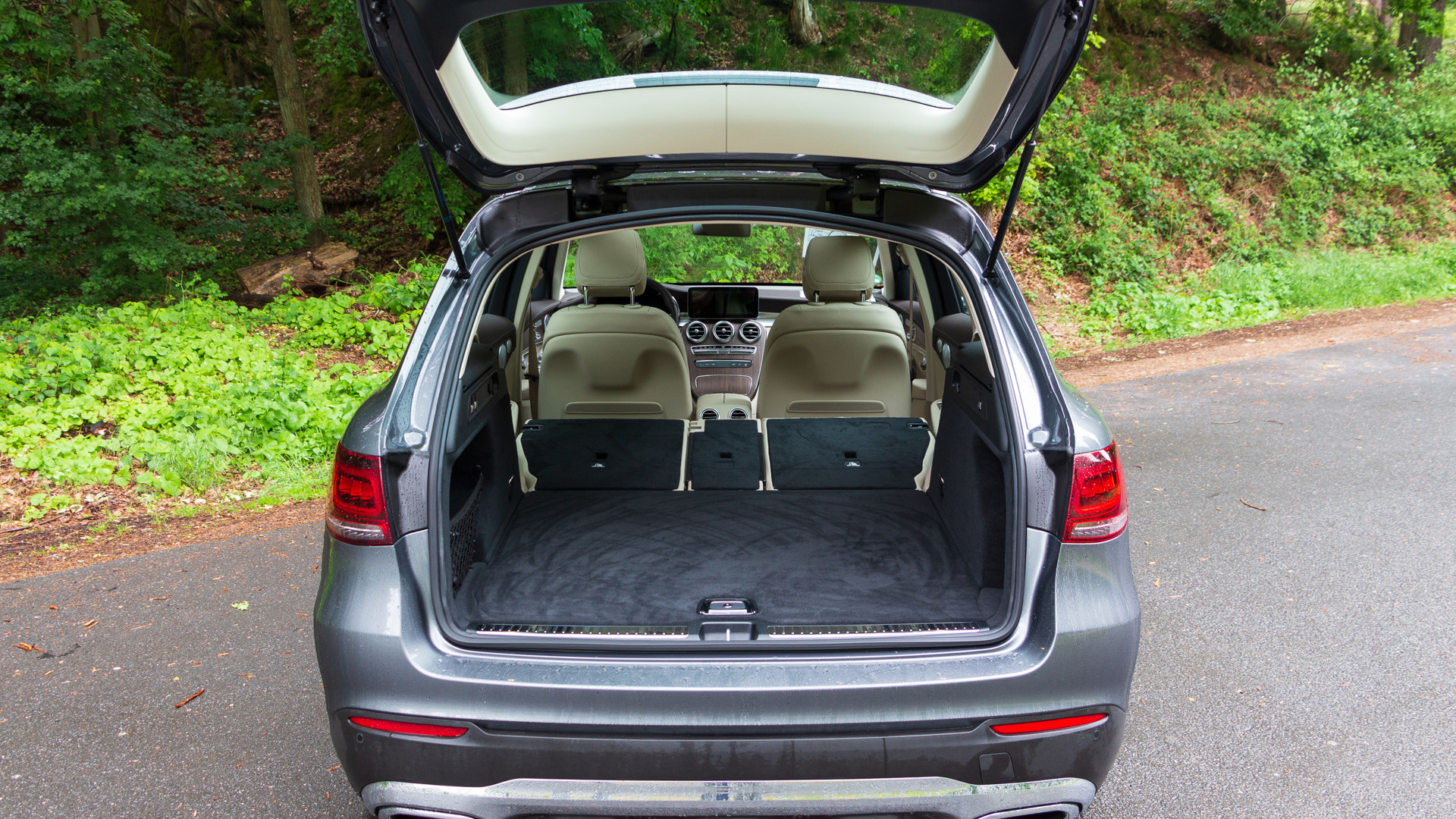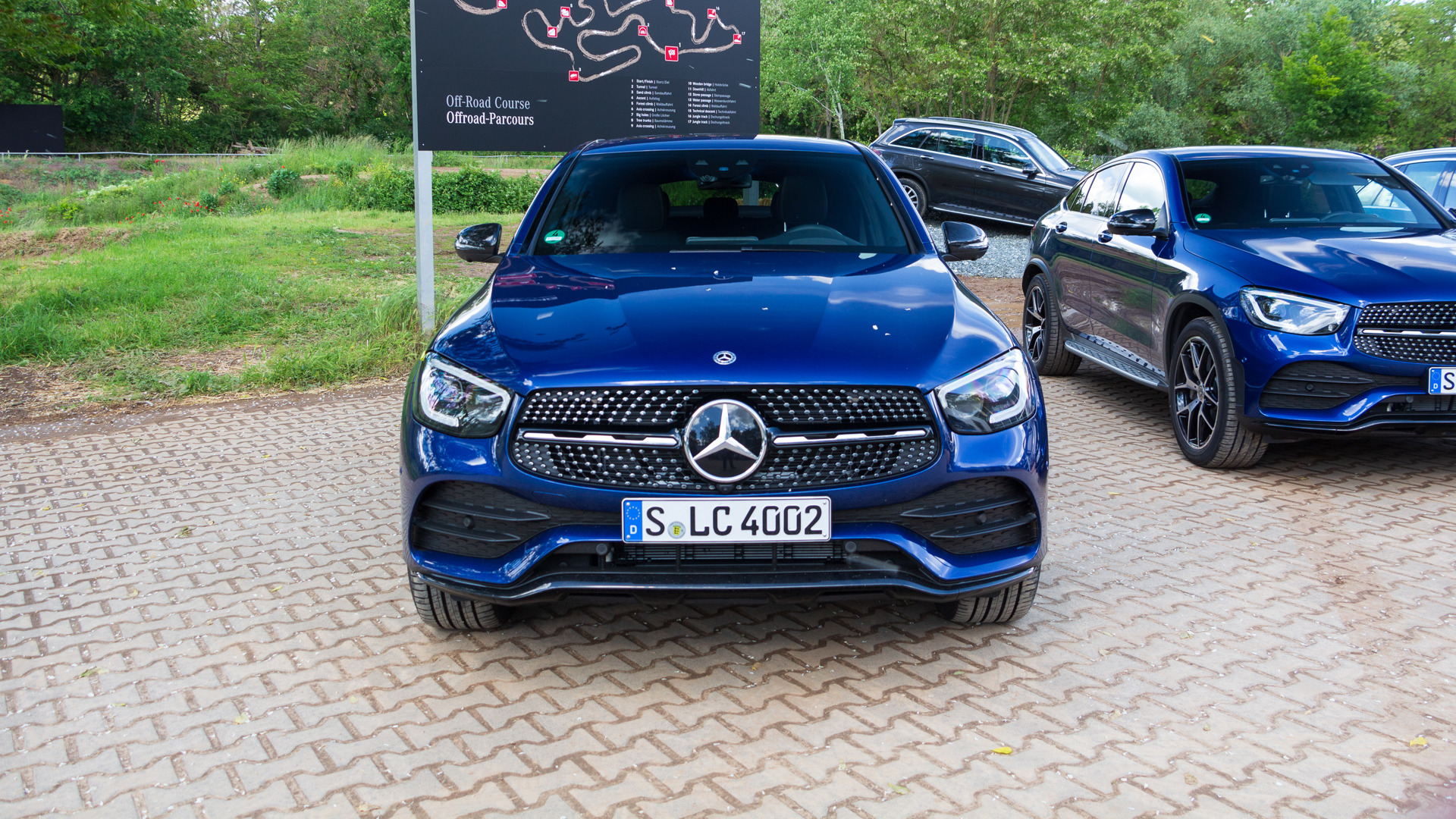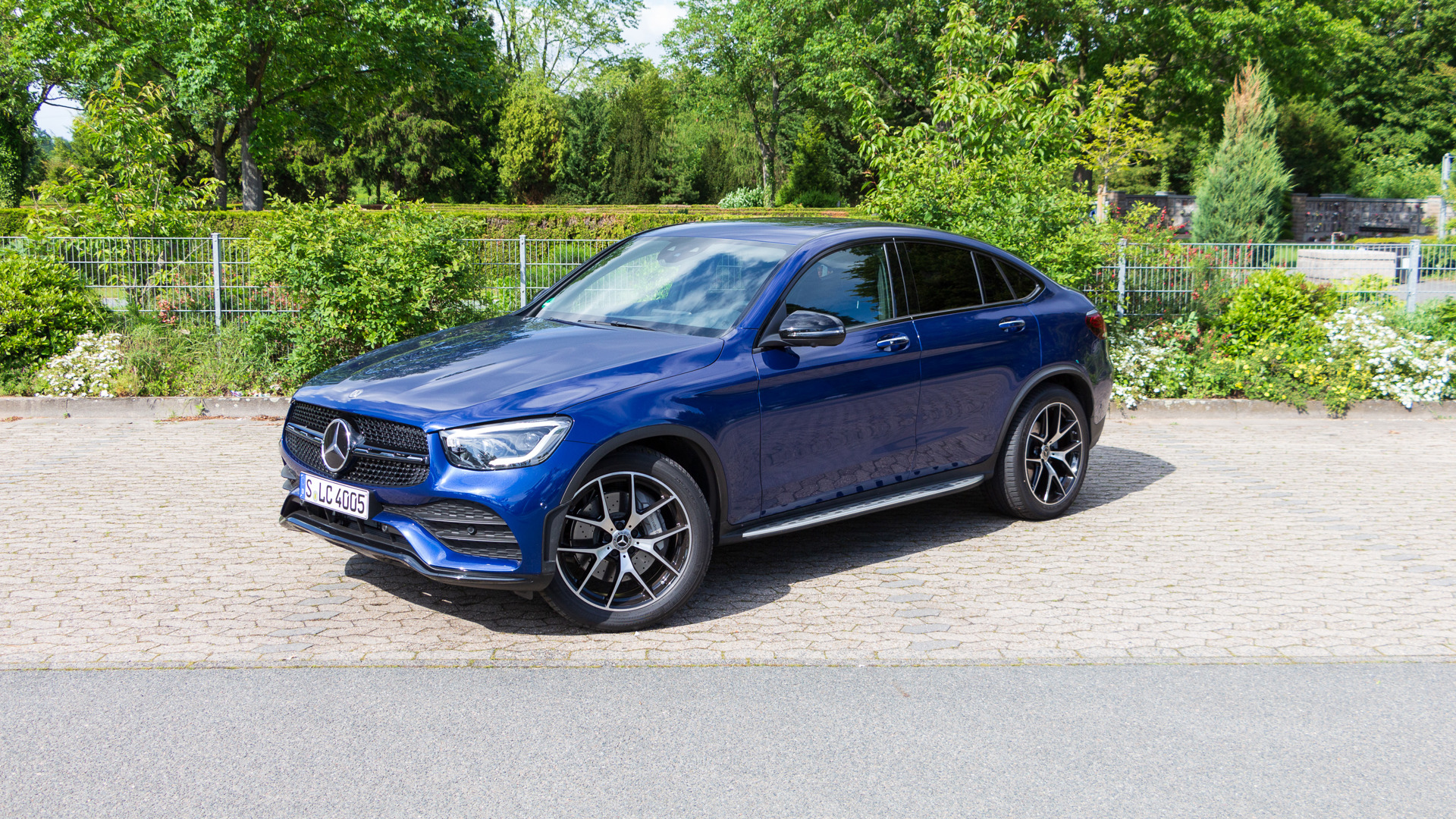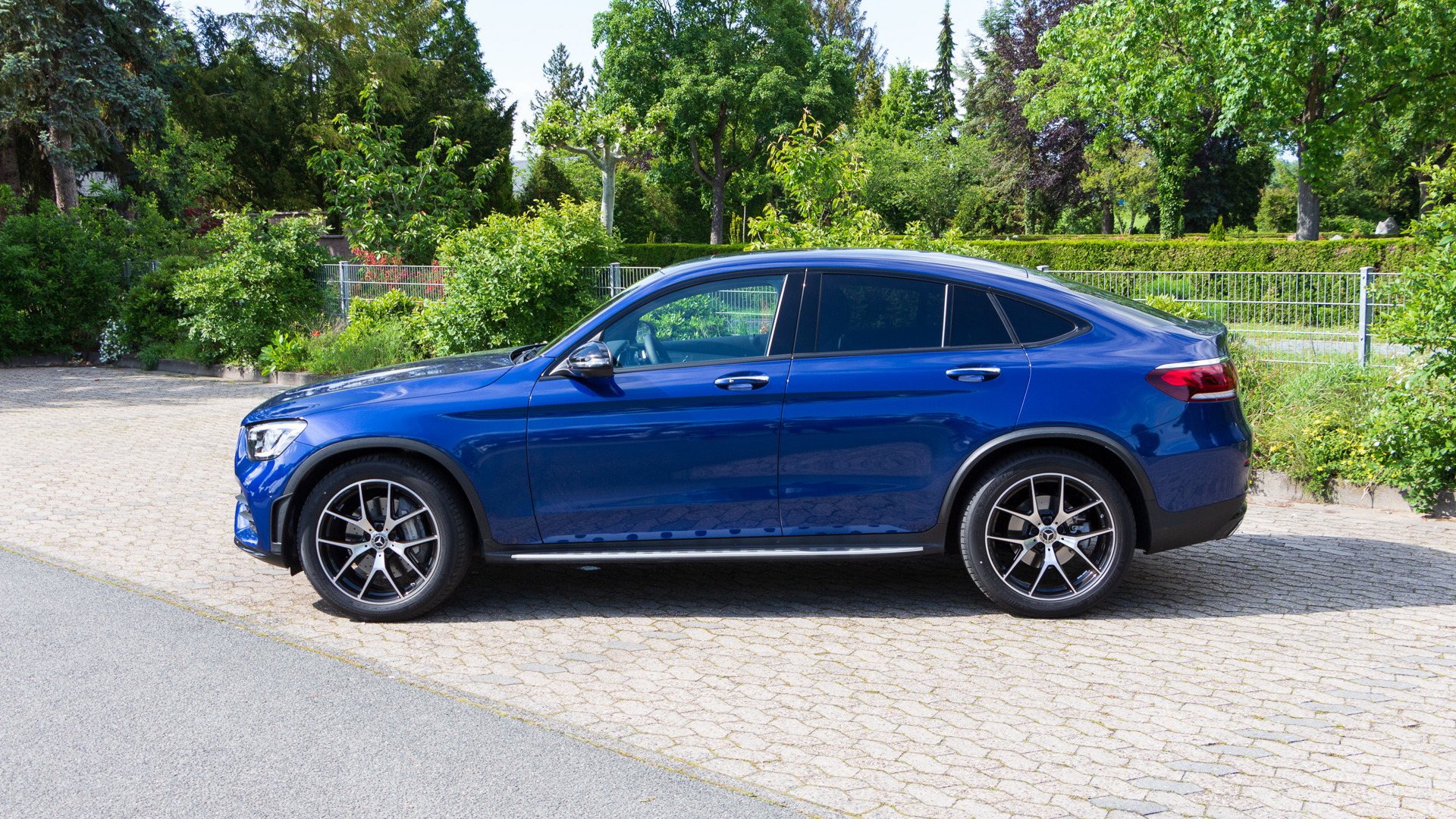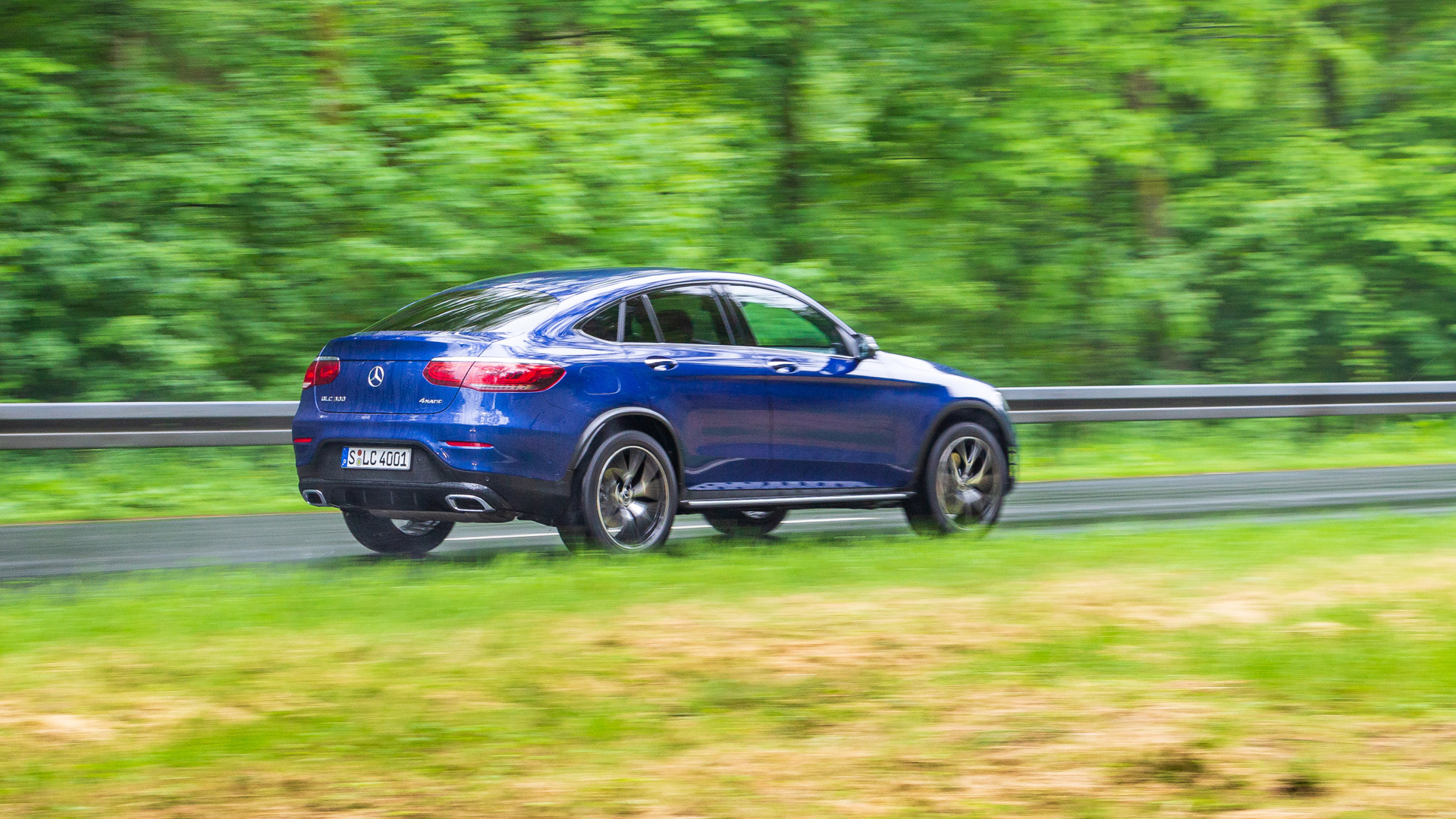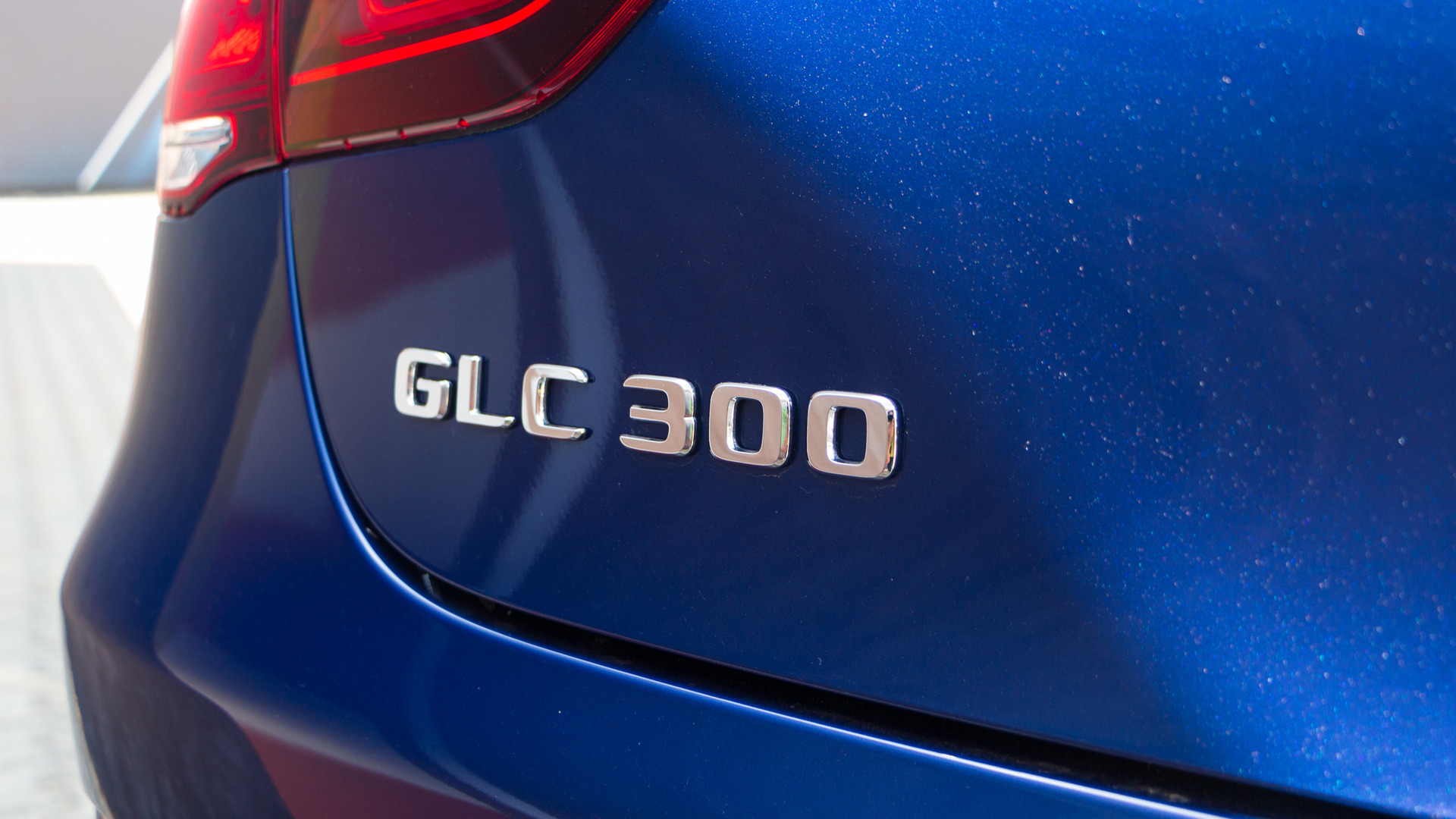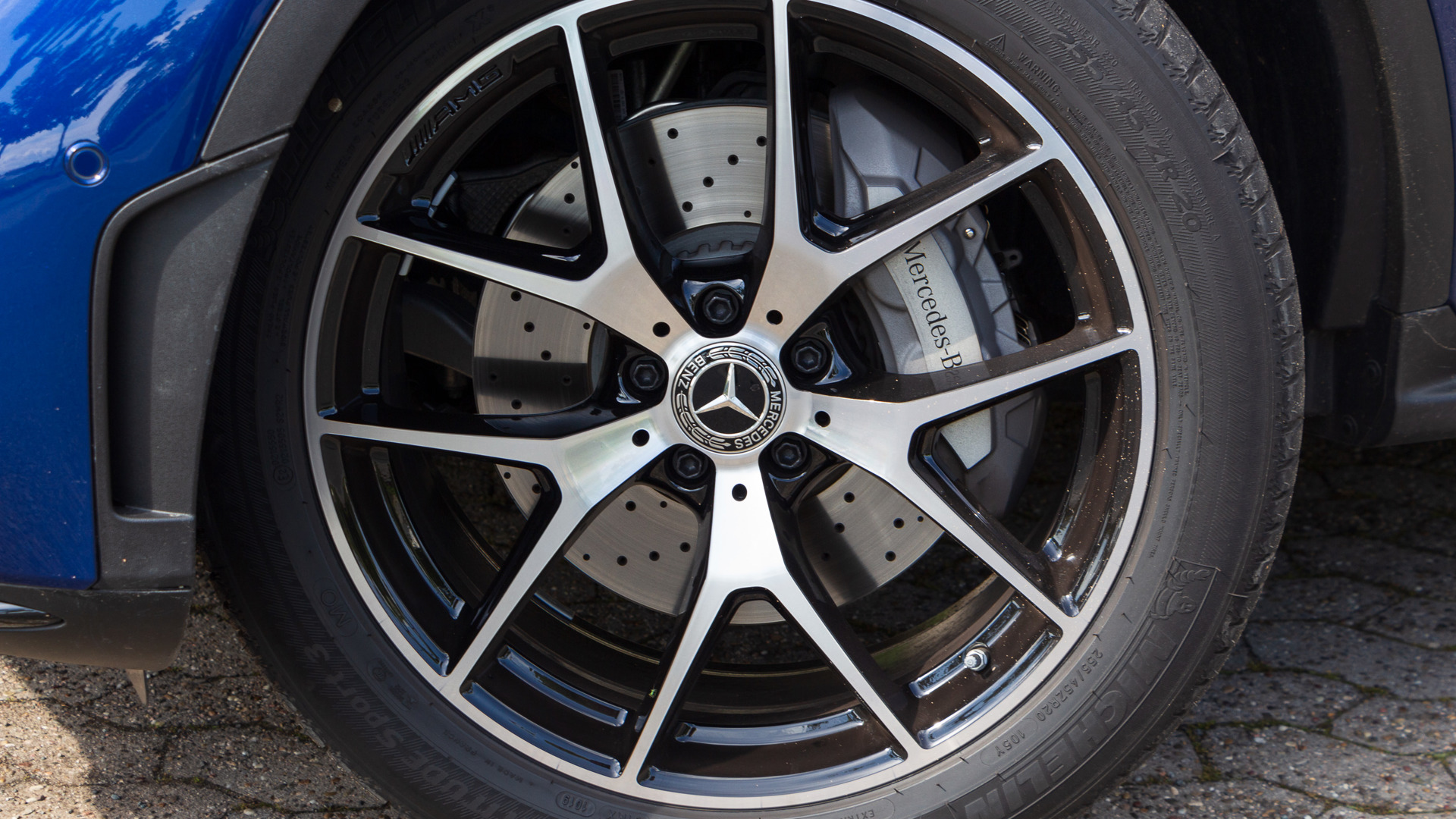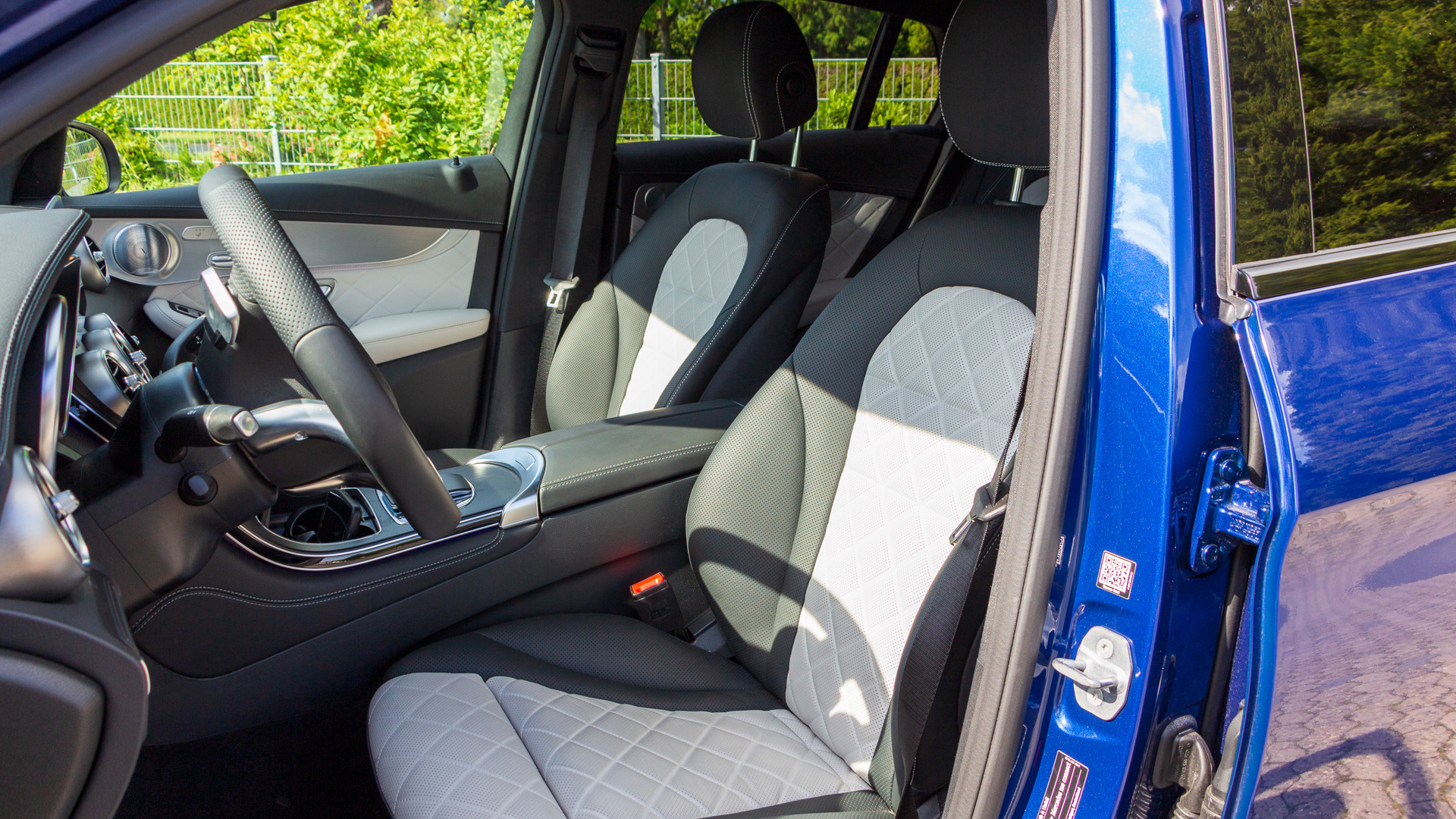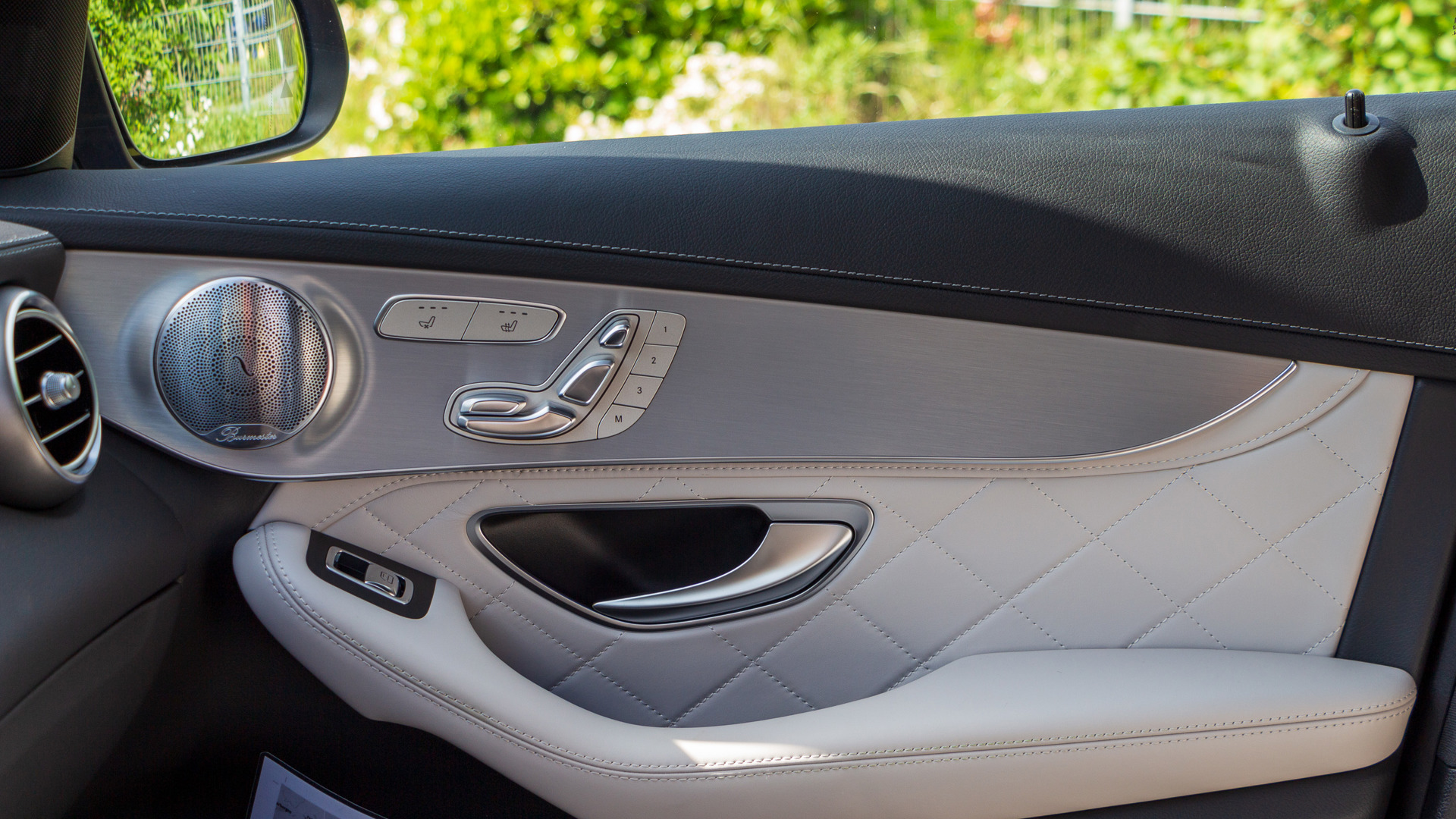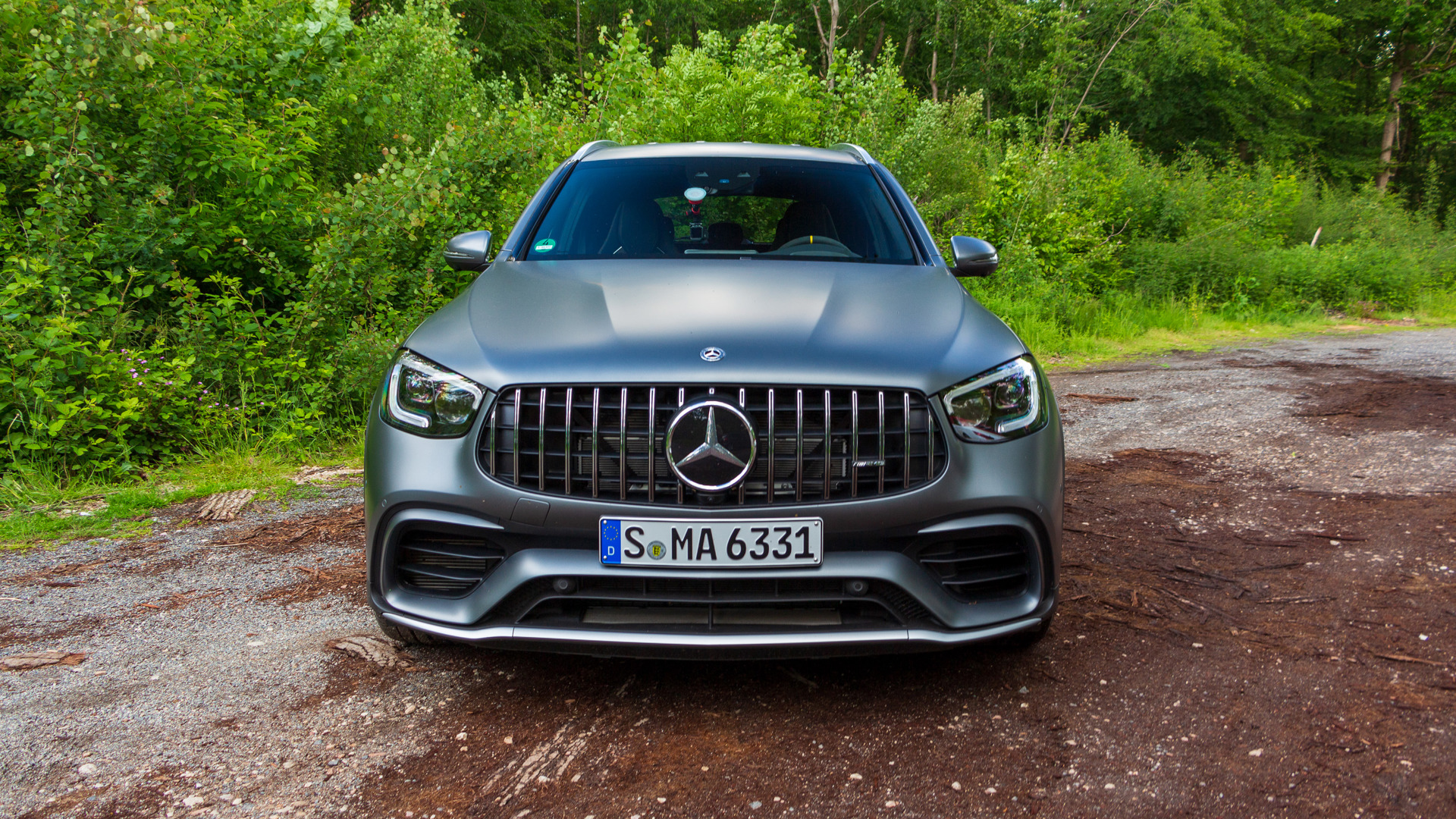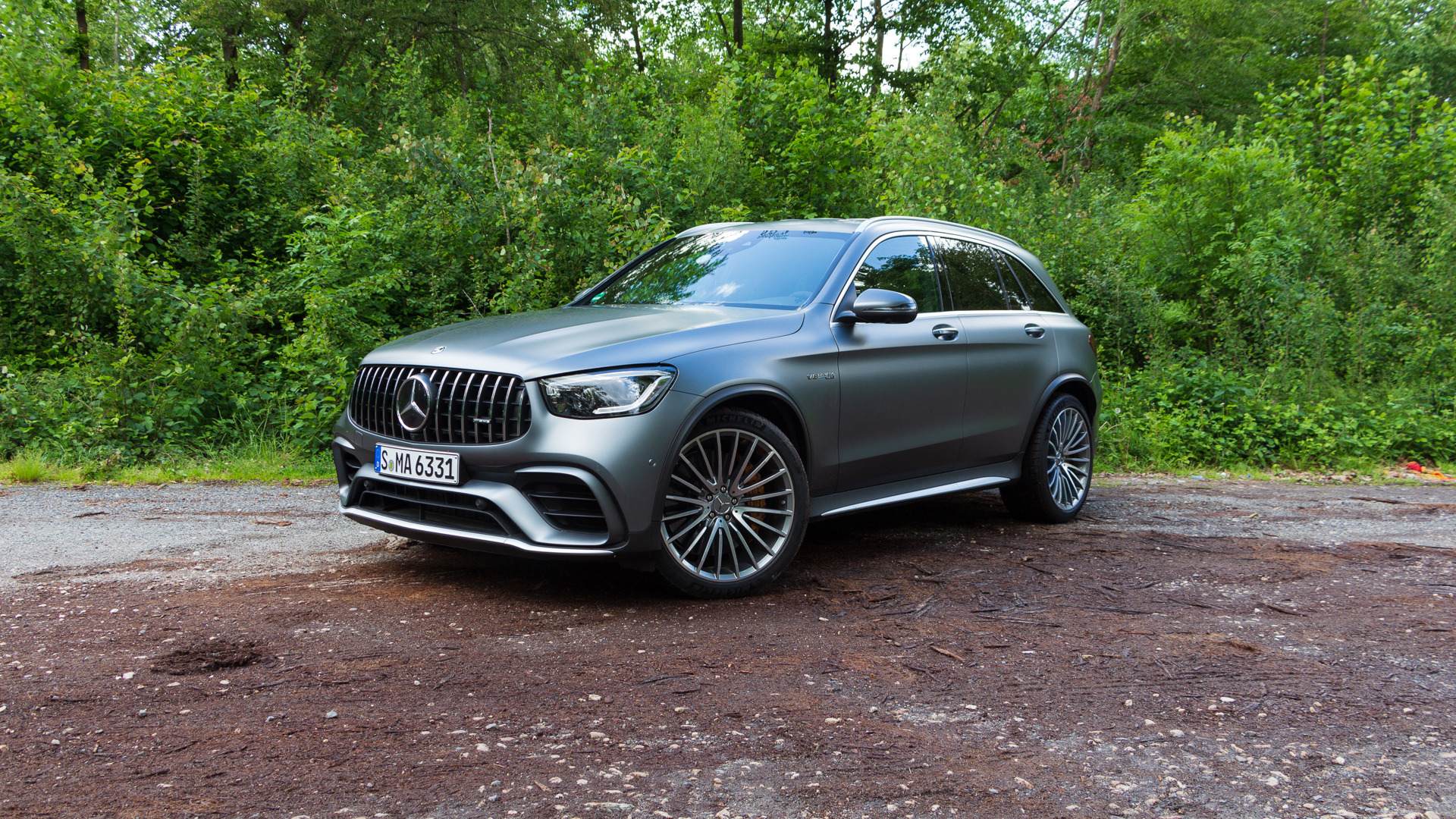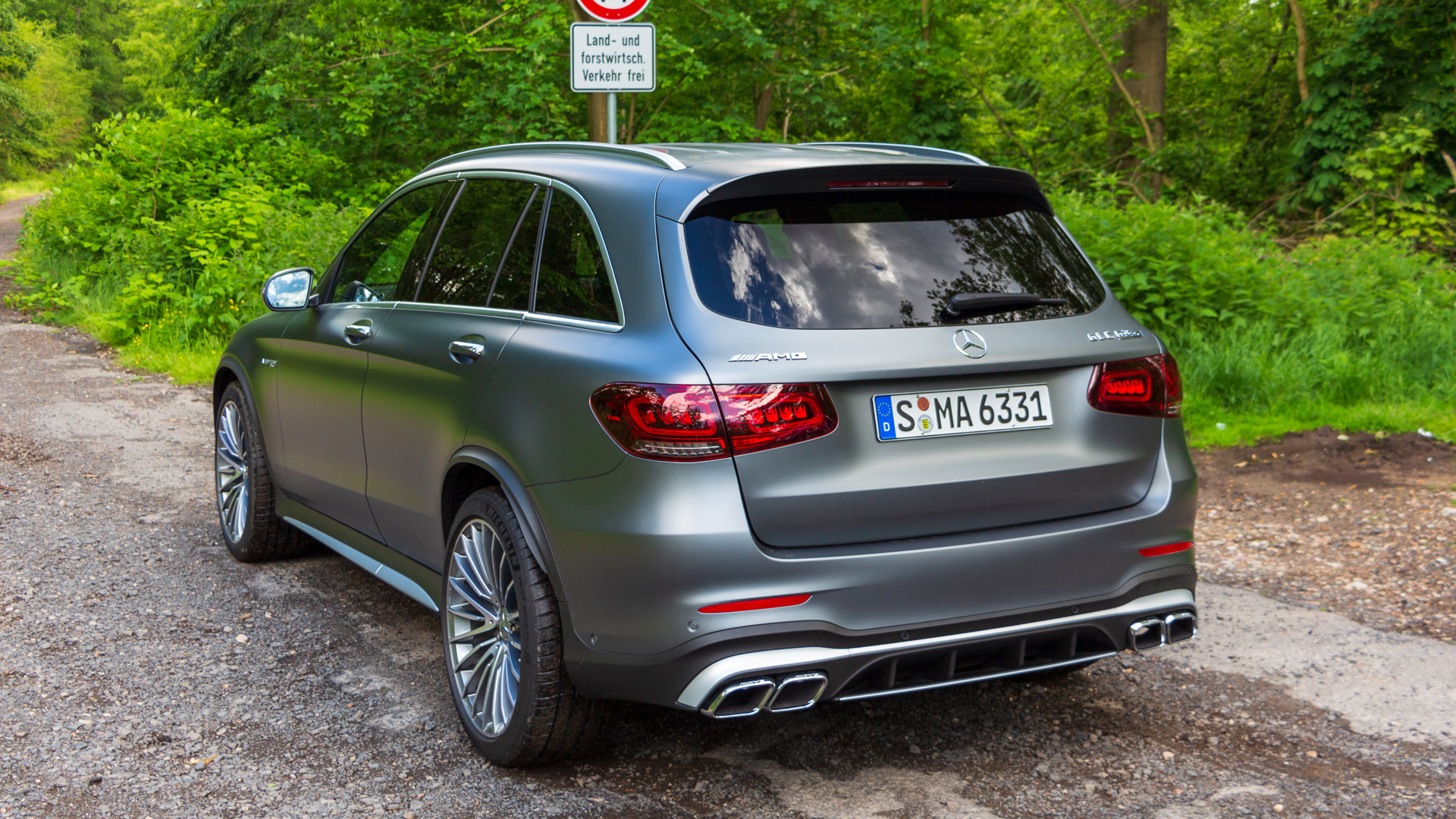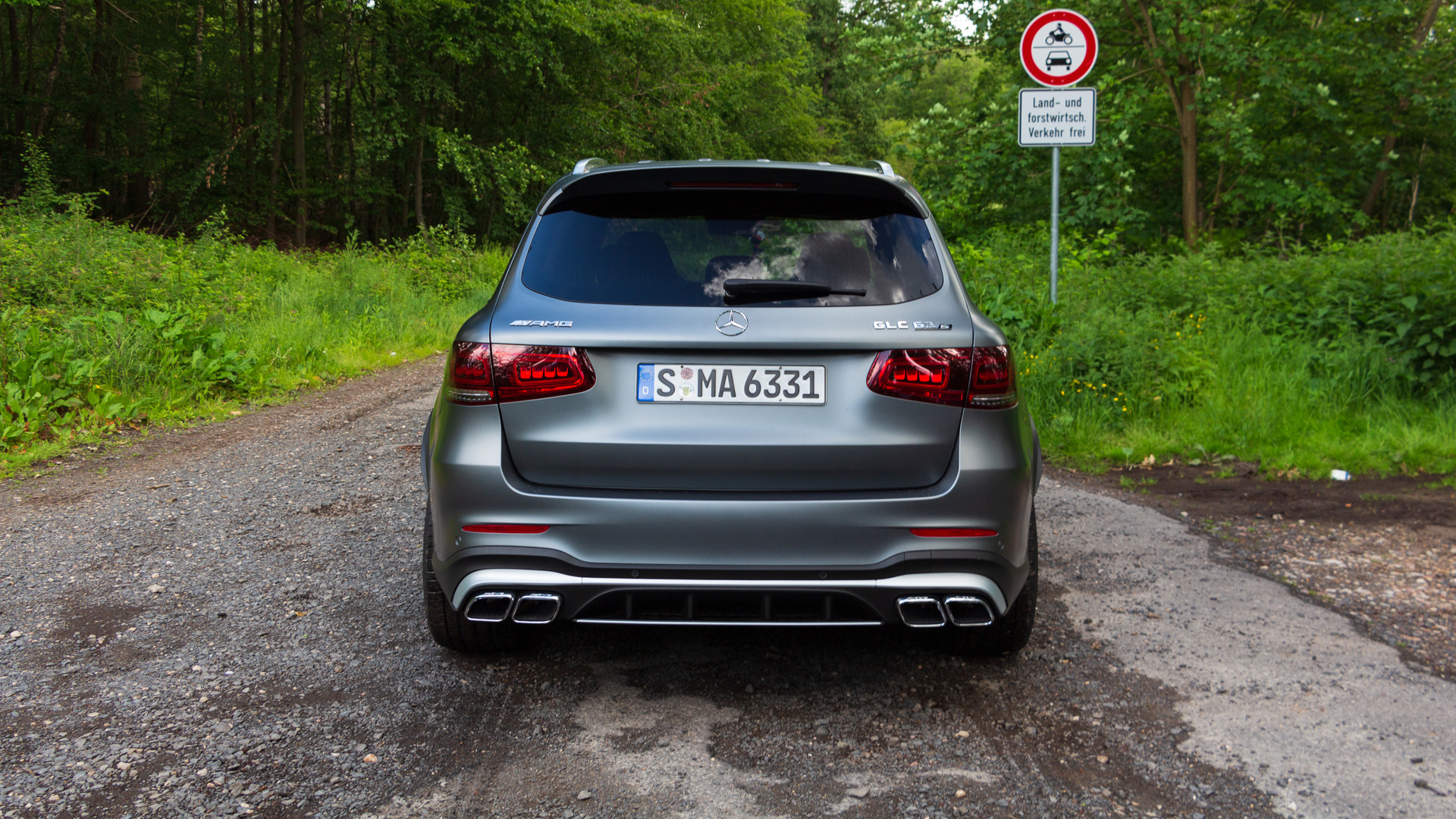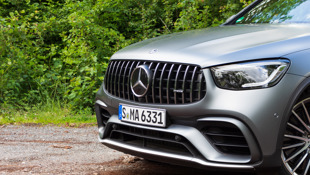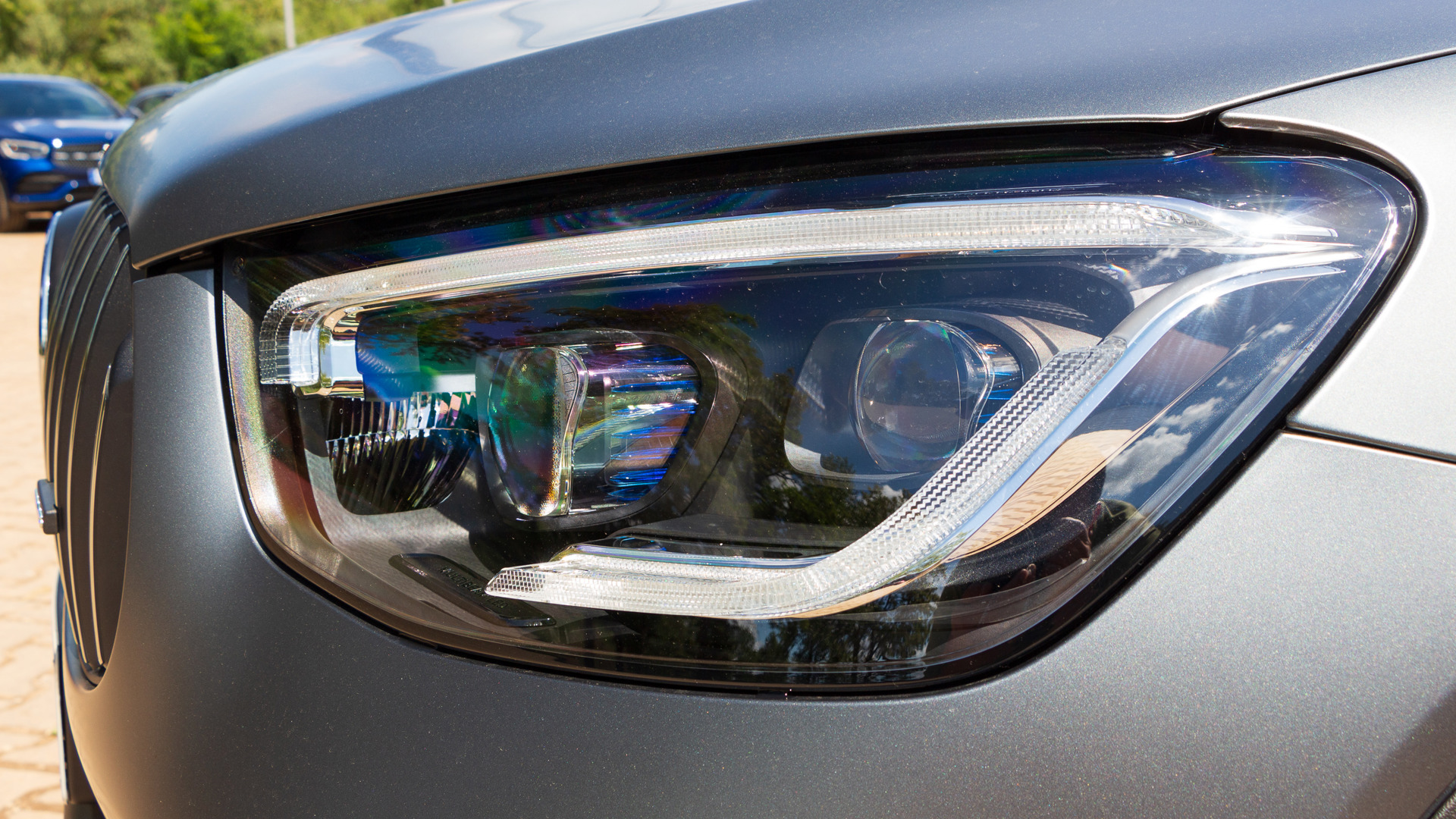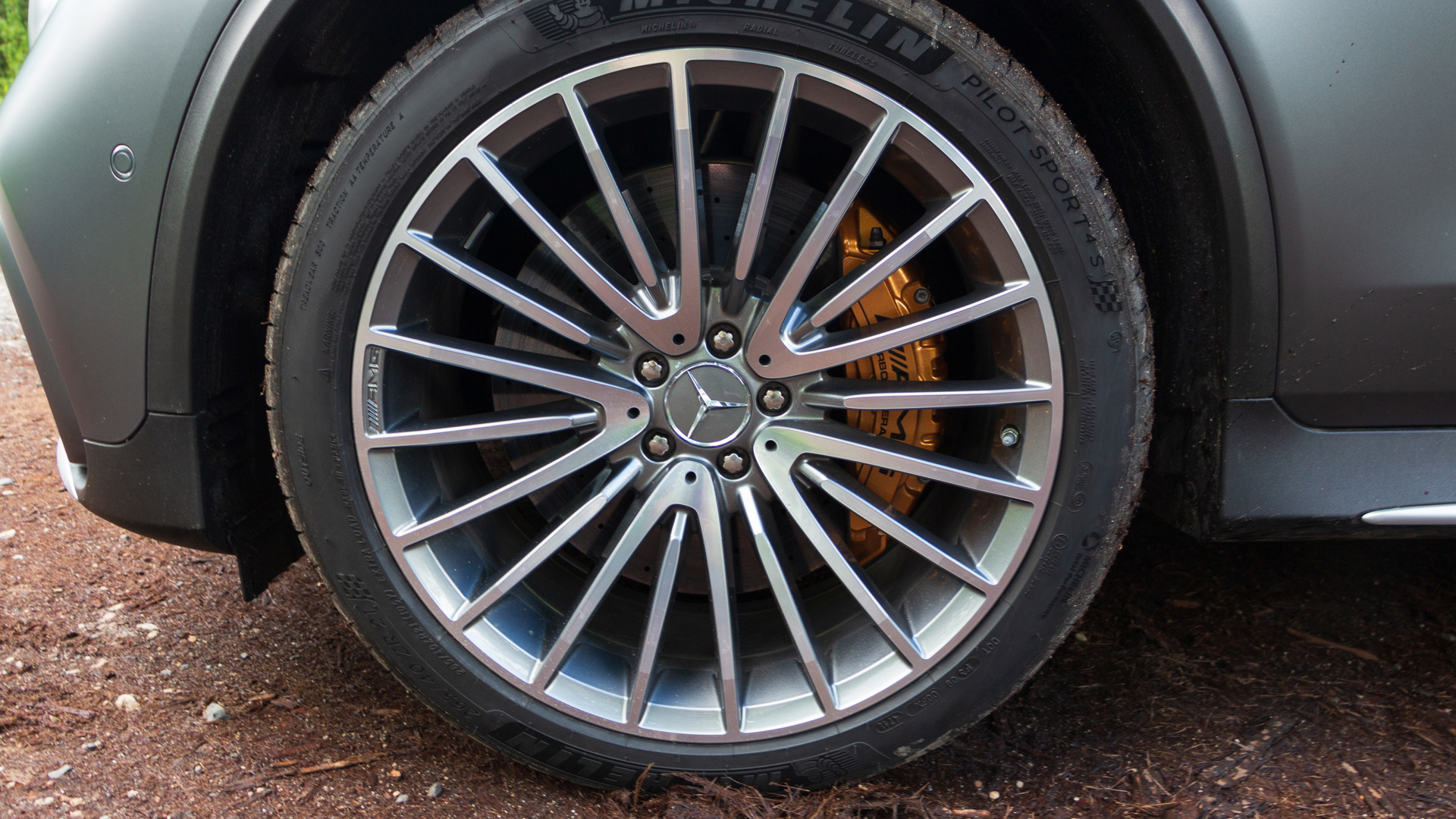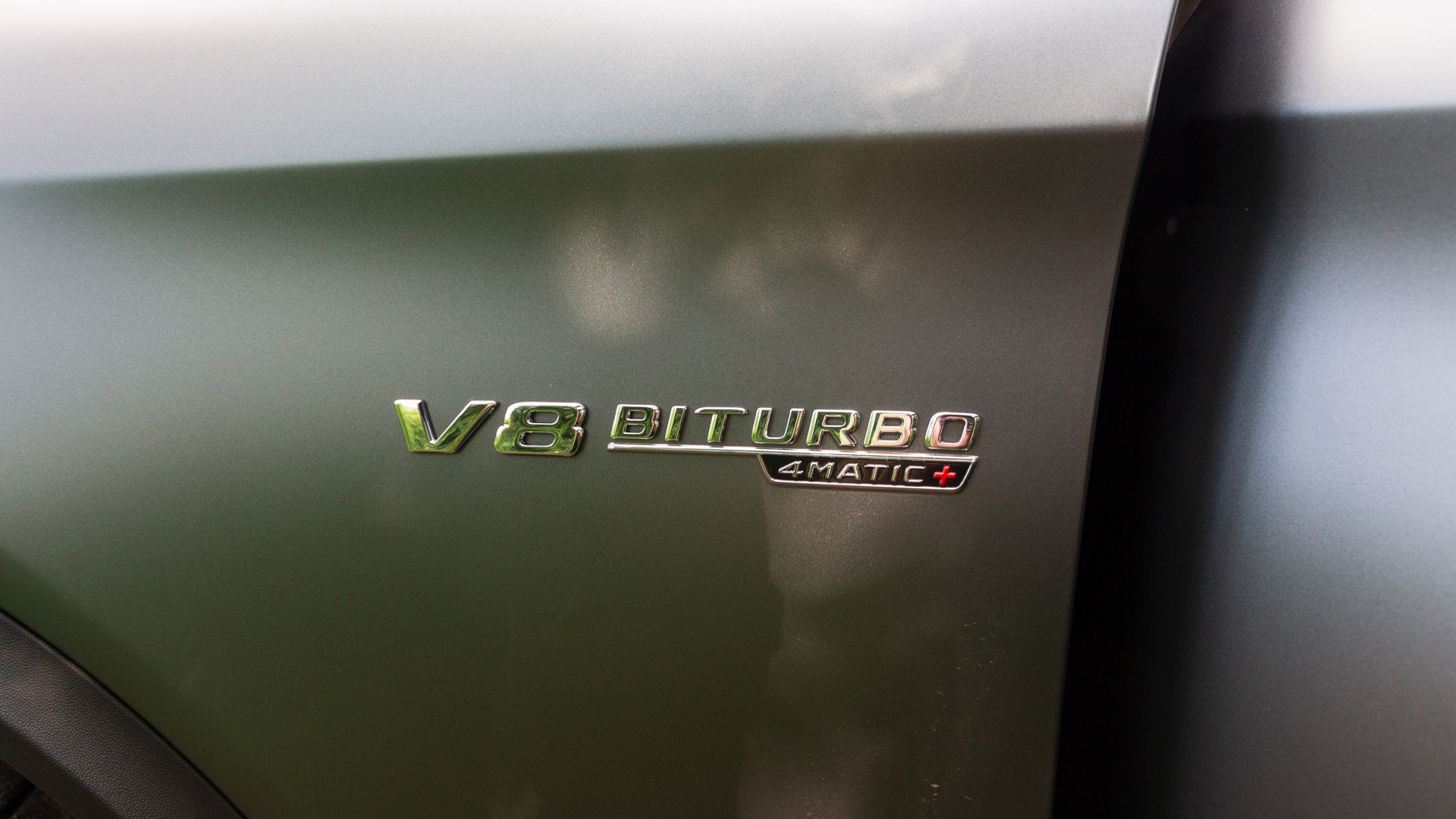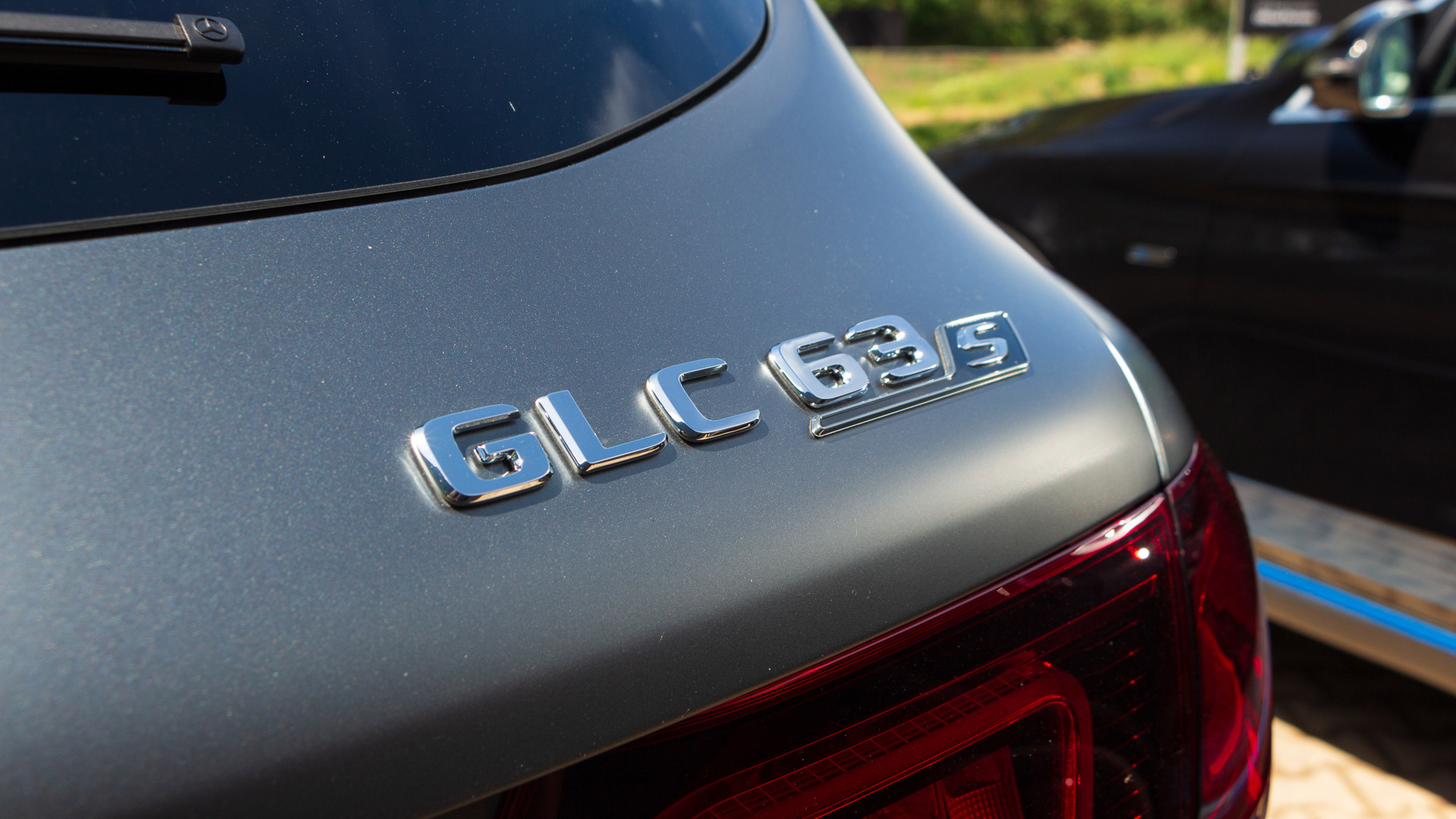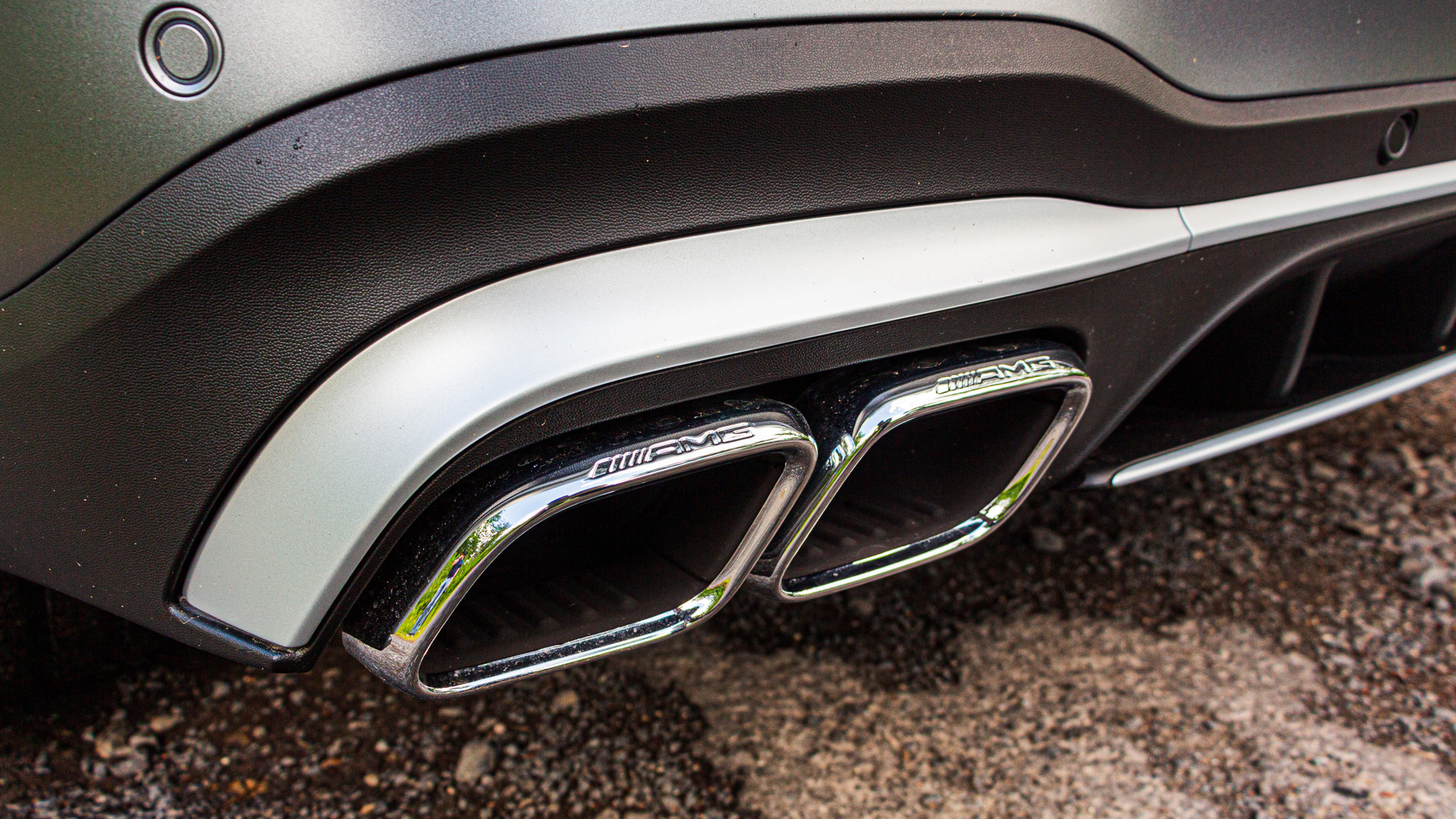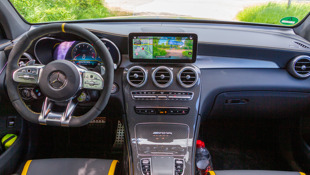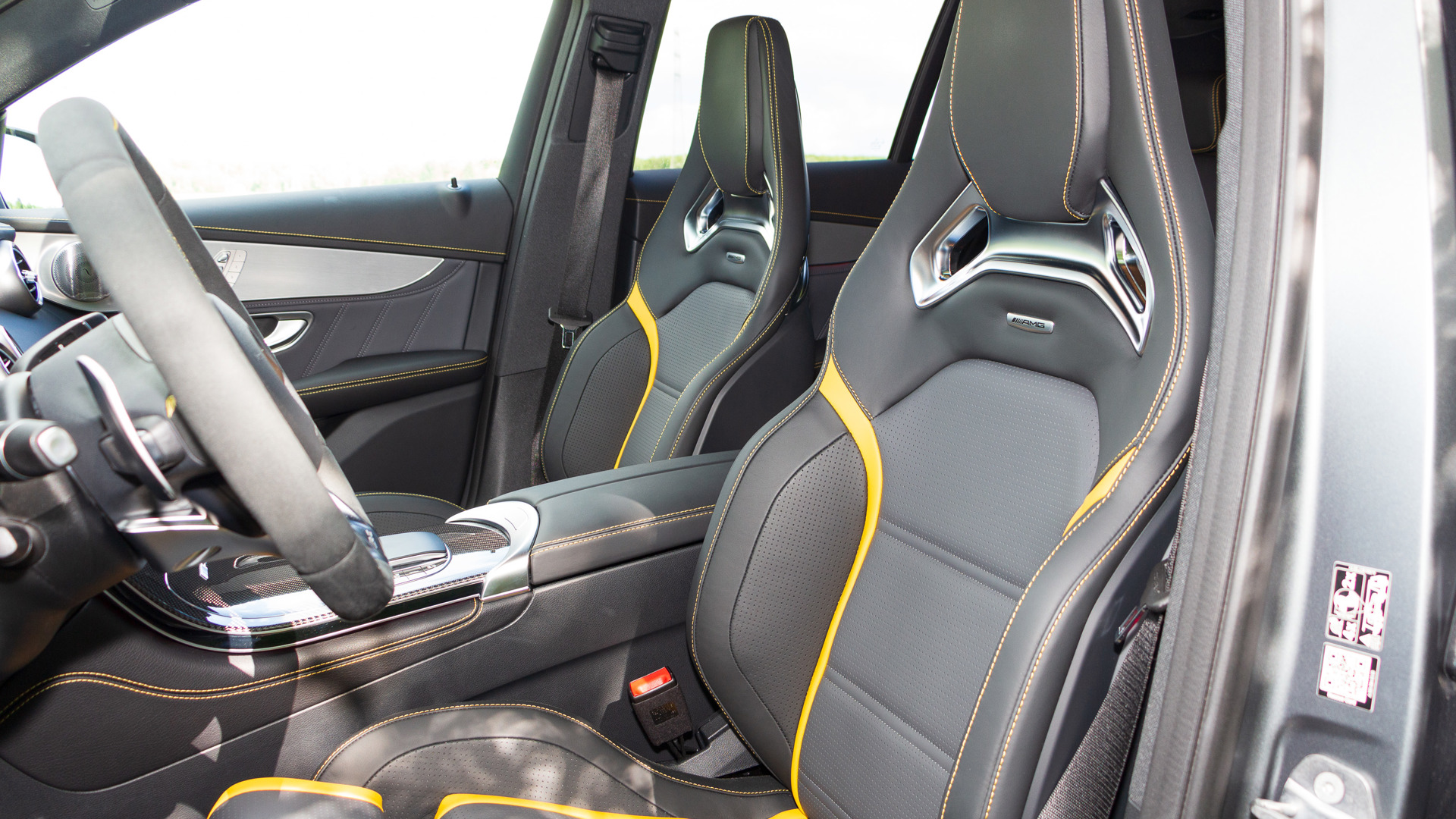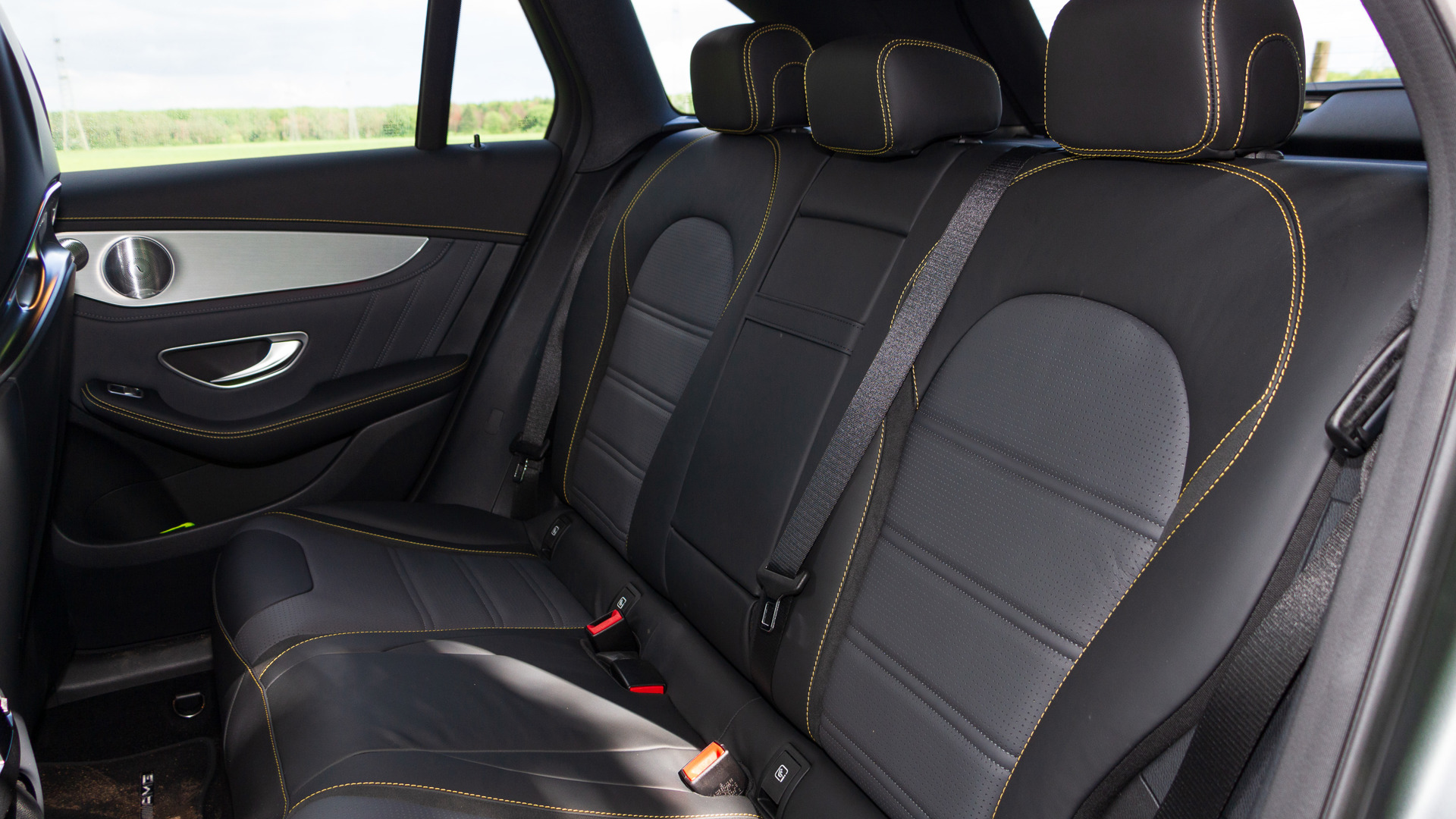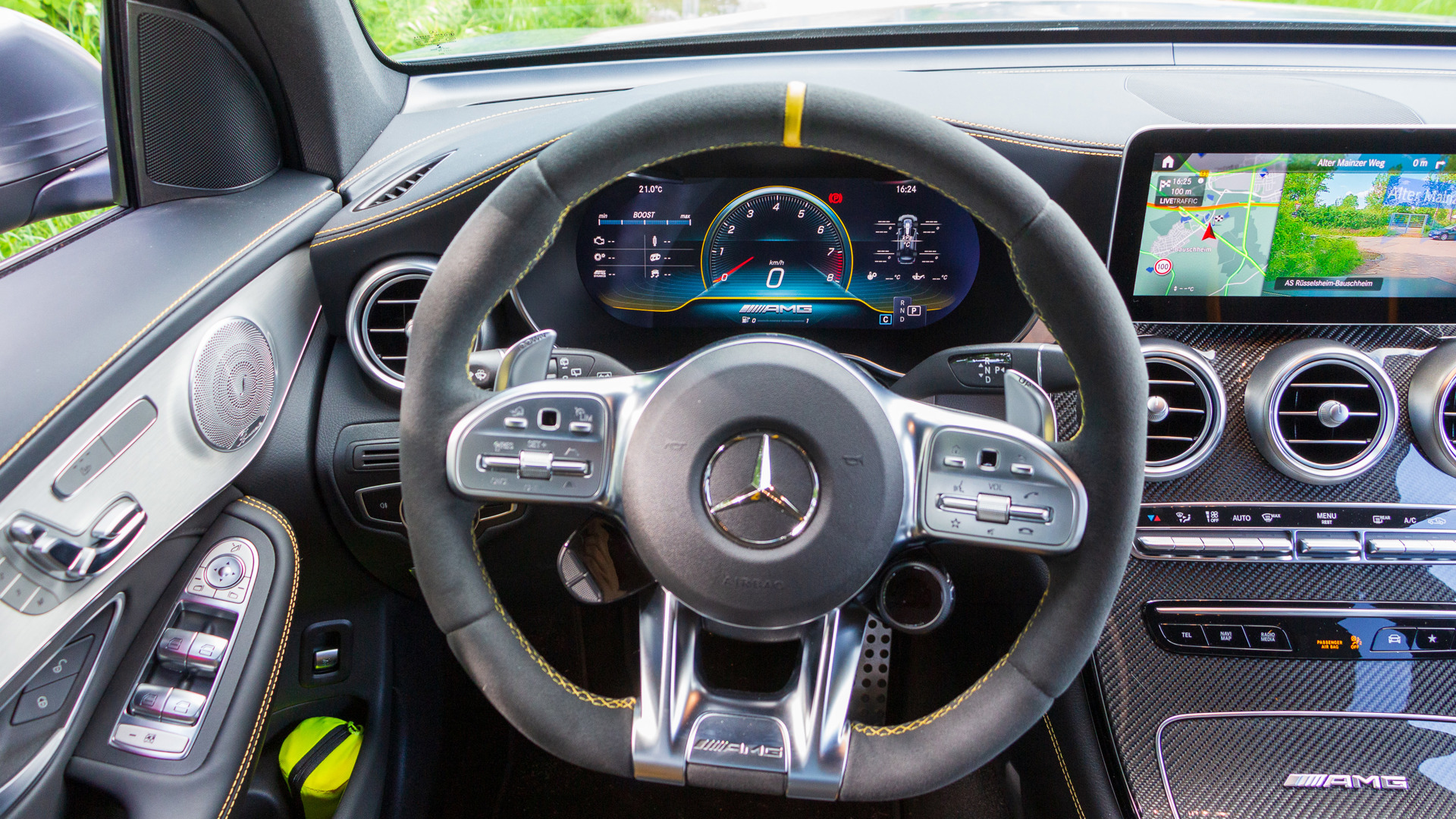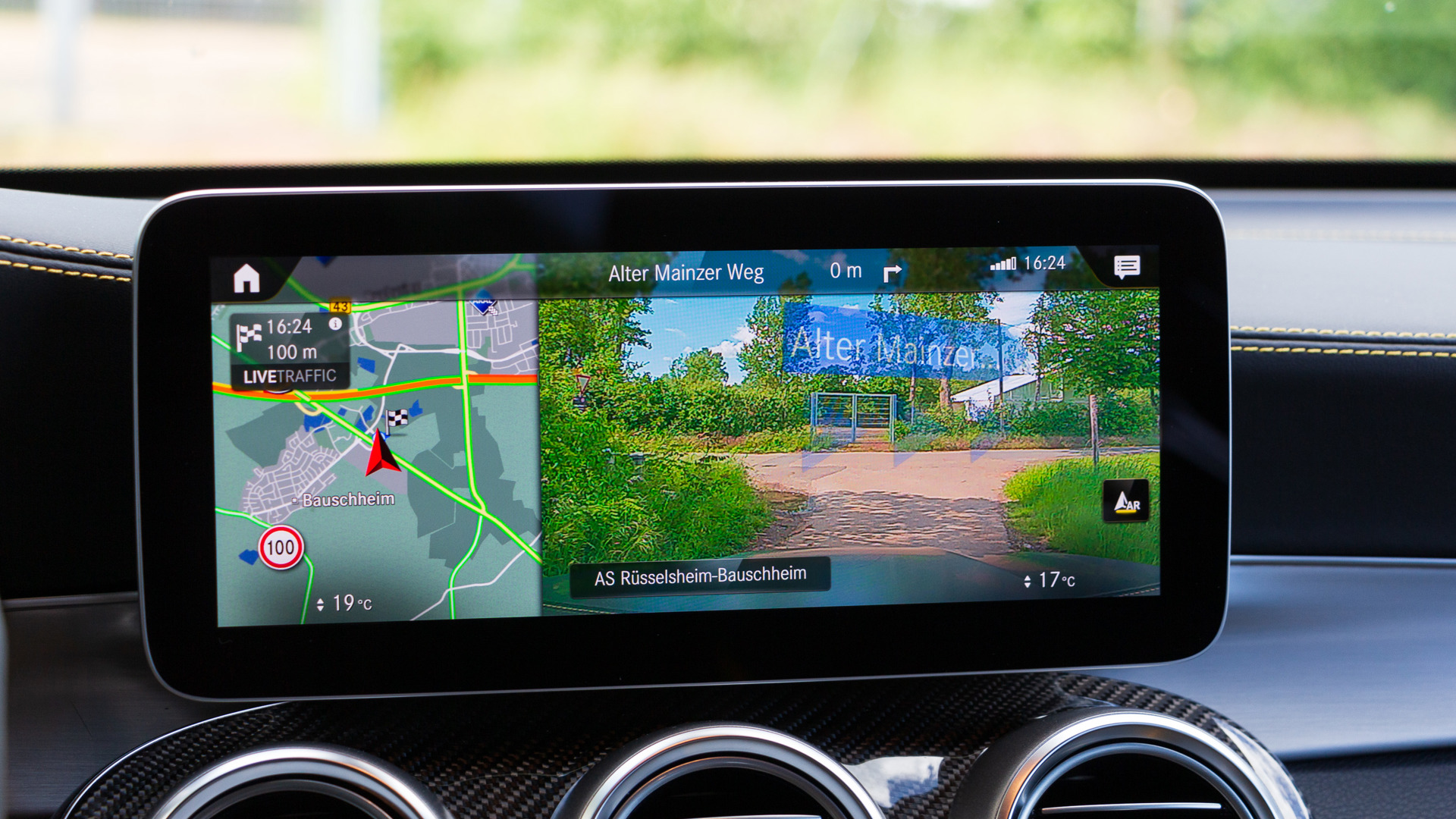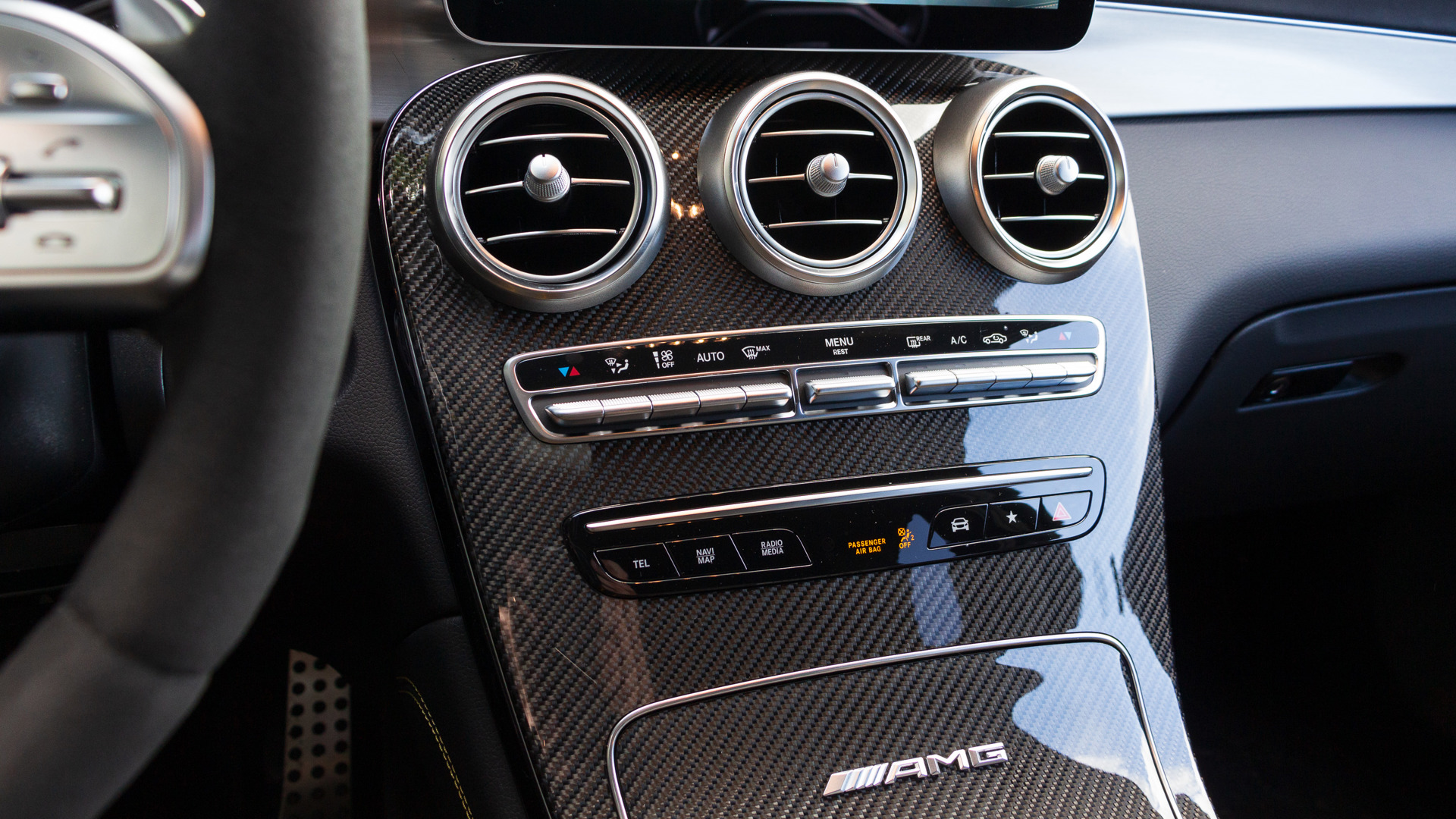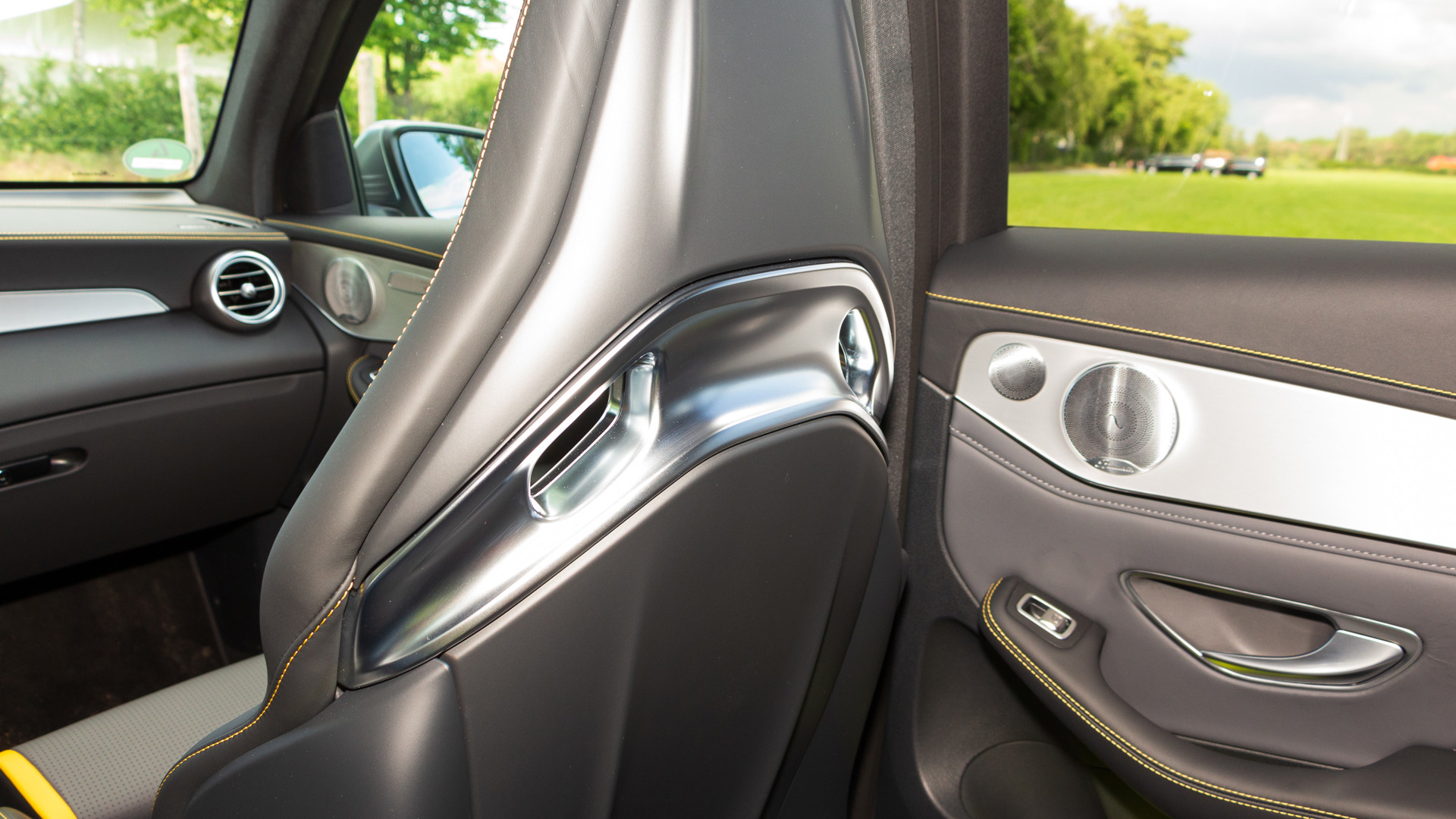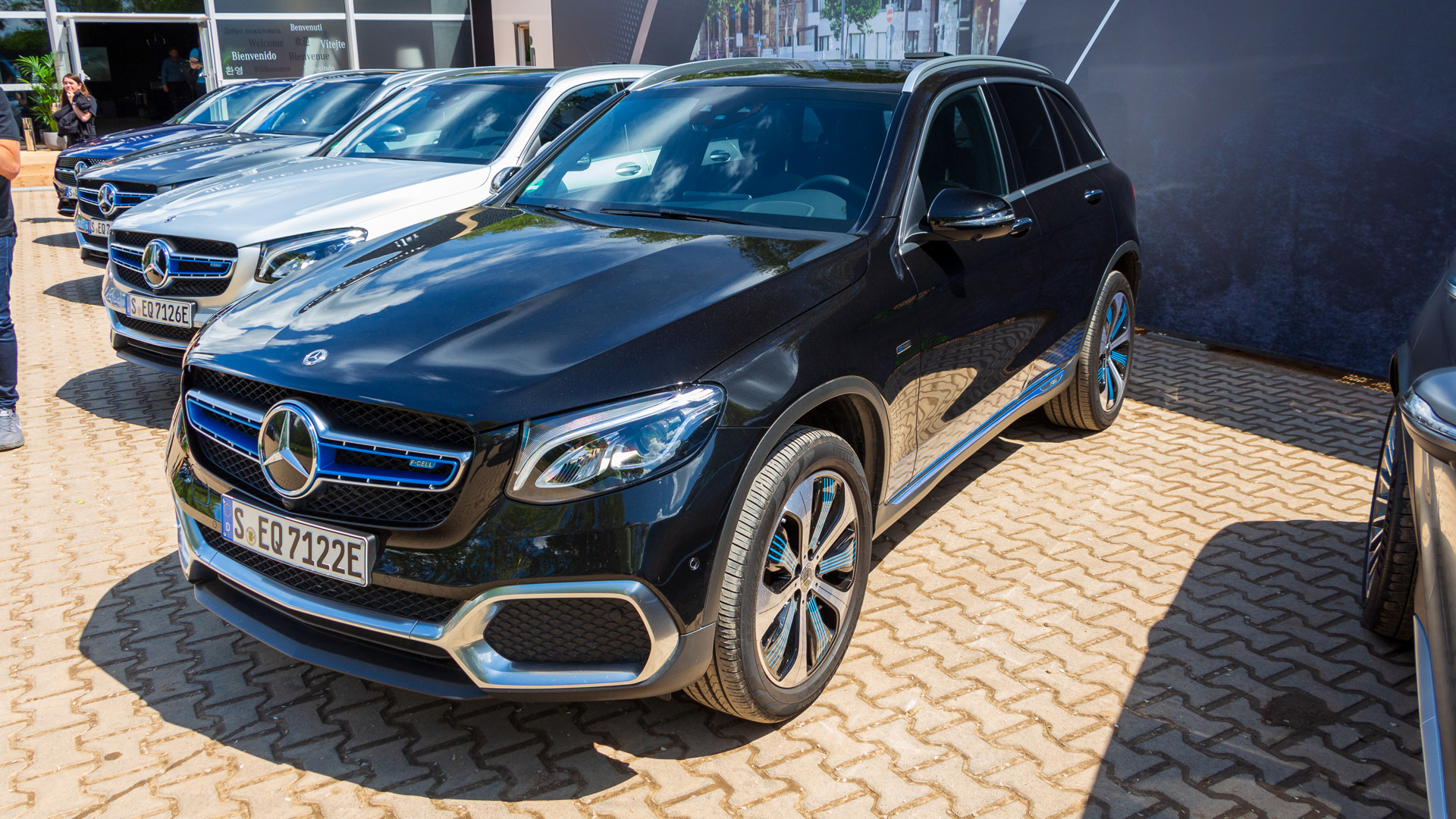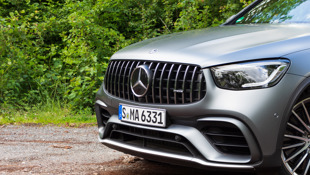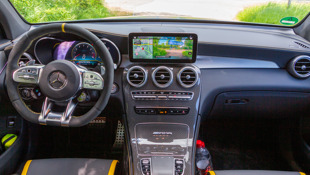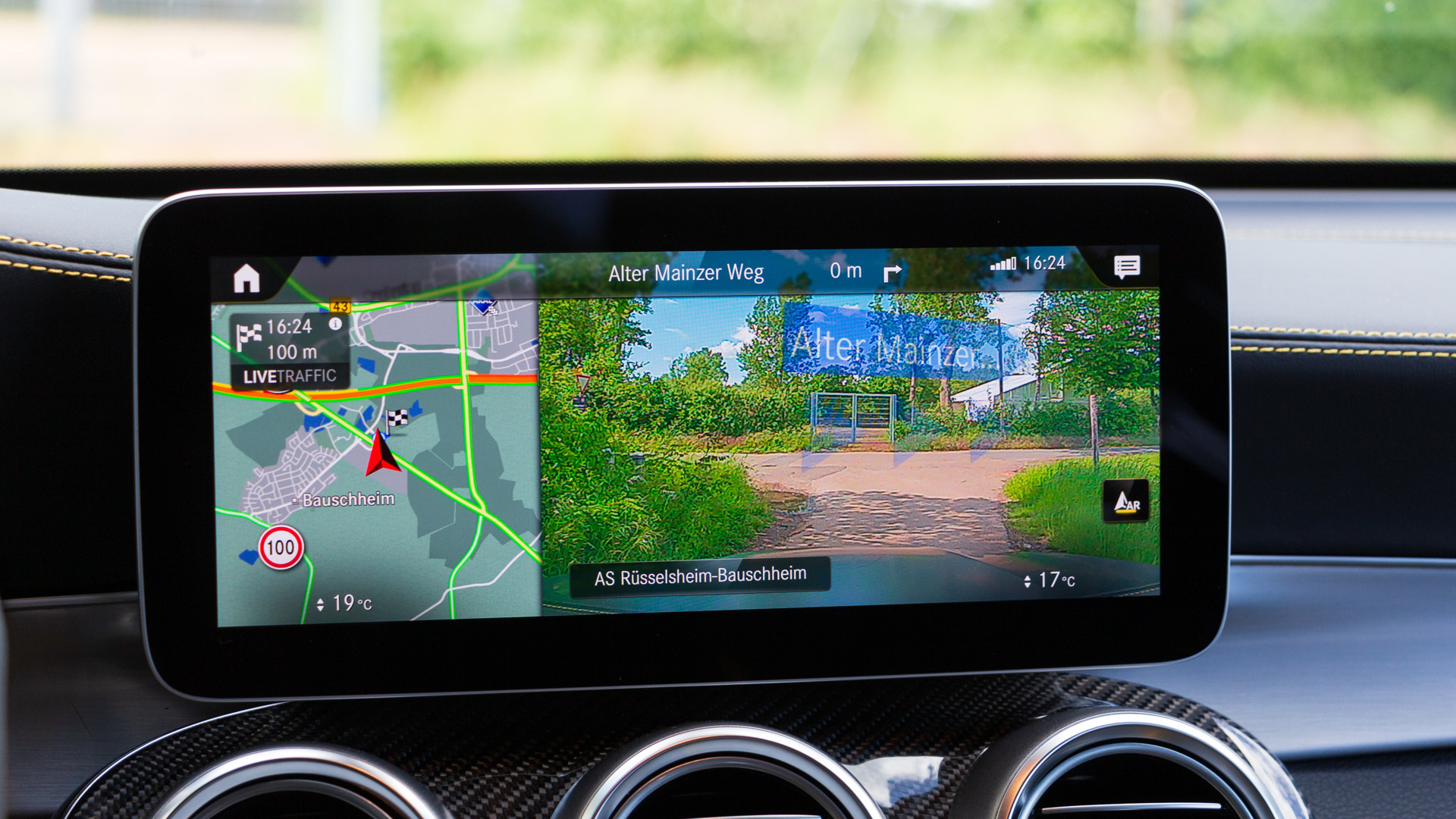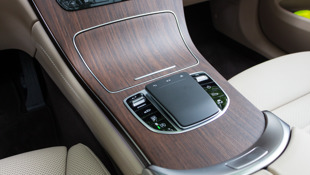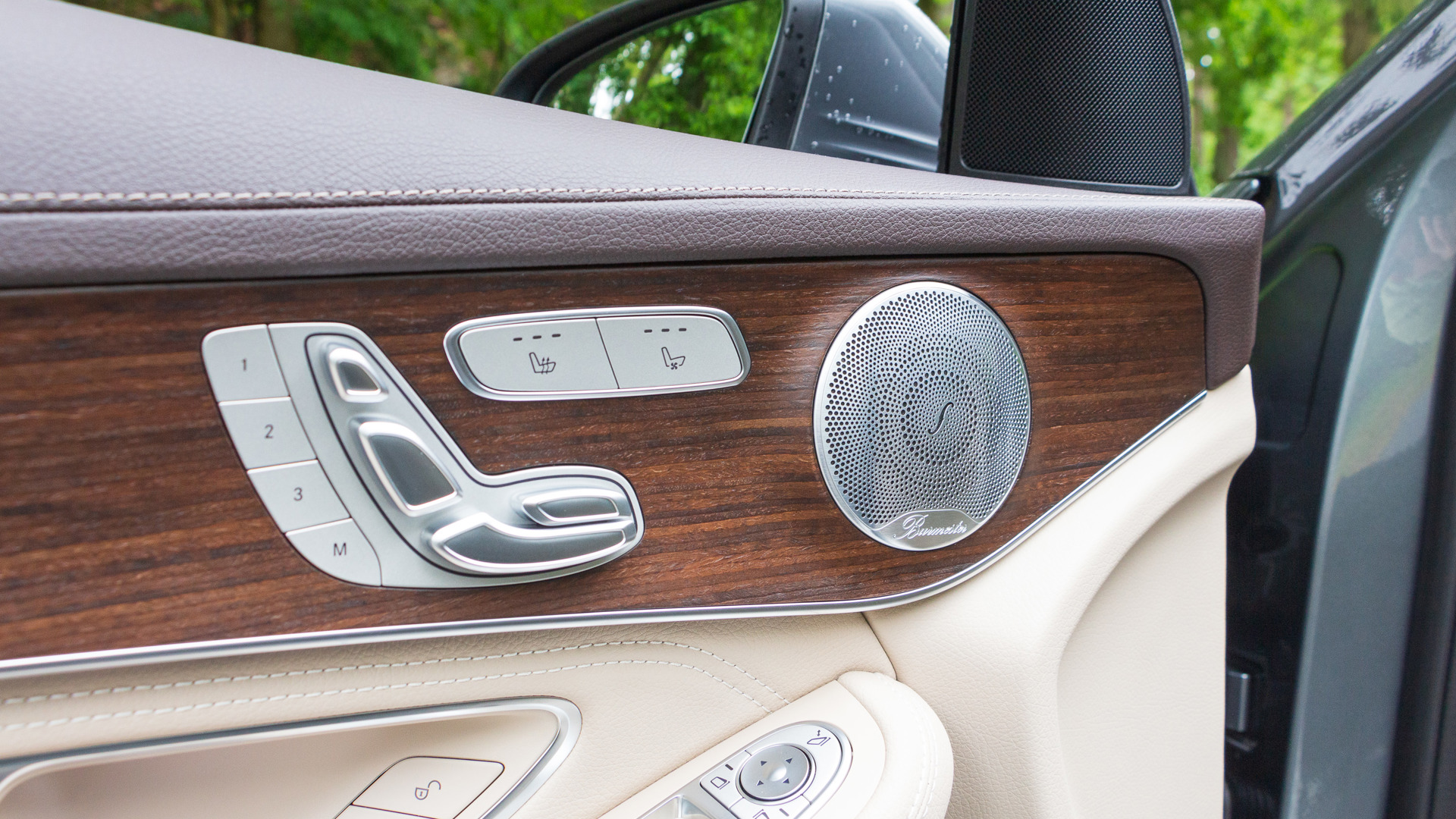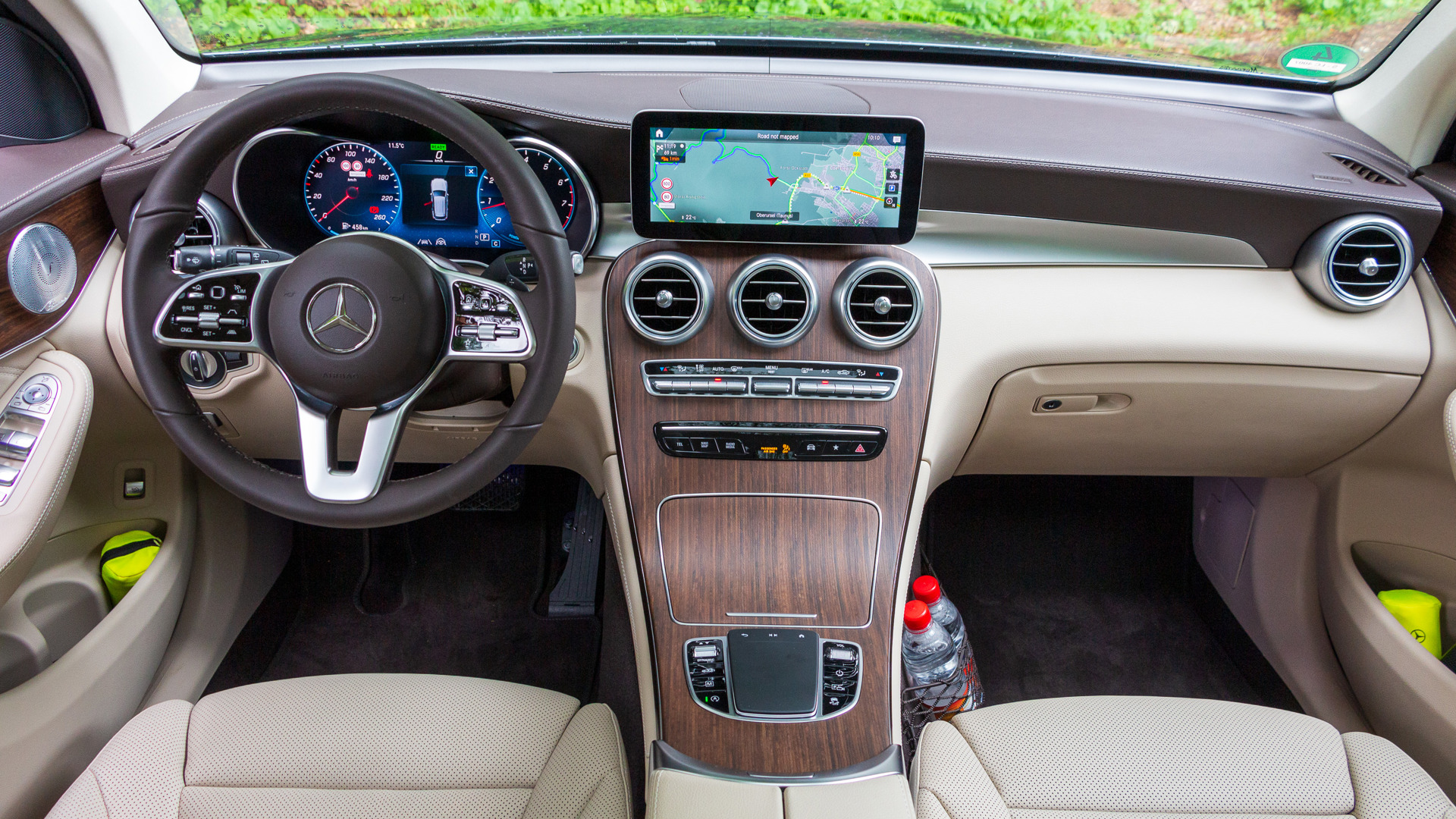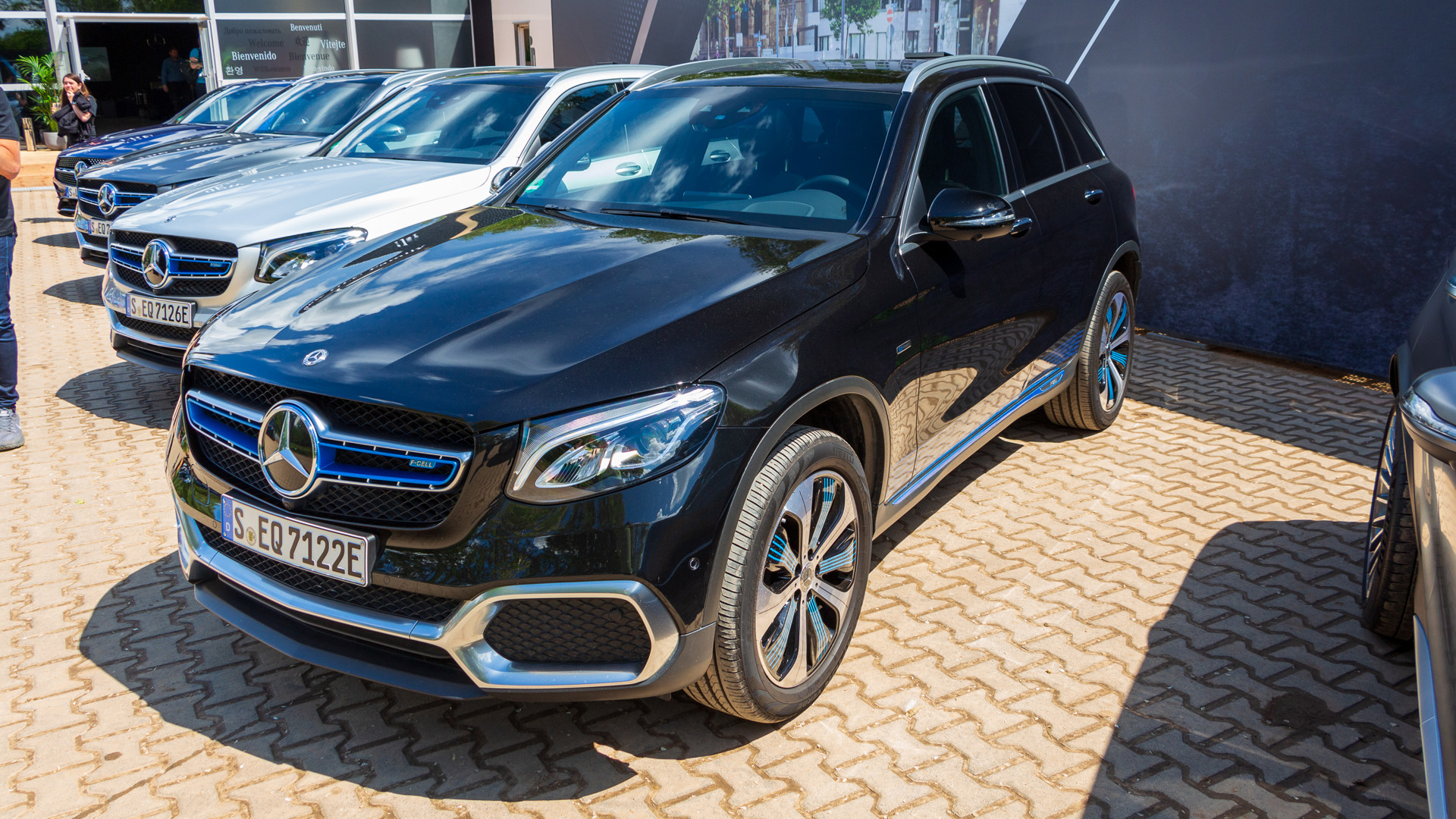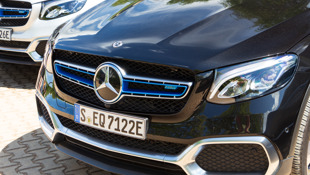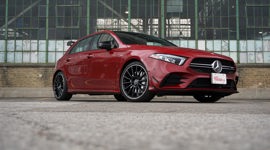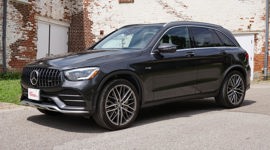The Mercedes-Benz GLC that arrived in 2015 was more than just a new name for the GLK it replaced. Instead, the formerly boxy crossover became far more curvy and more upscale; losing the G-Class looks (a pretty distant resemblance to begin with) for something a little closer to Mercedes' sedans. For 2020, it's not a full redesign for the GLC, but there are some changes outside to bring back a bit more of that original muscular appearance, and changes inside that add some new tech and a better experience when using the multimedia system.
Luxurious, quiet, smooth, and effortless.
The Changes
That new look starts with a new lower grille on the GLC SUV model. (As opposed to the GLC Coupe model – which is still an SUV, but they're calling it a coupe because the roof is rounded. But that ship has sailed when it comes to automobile nomenclature, so we'll just go with it.) The SUV gets a much bolder insert in that bottom grille, the old car's large opening being replaced with a new three-hole-punch grille. The openings flanking that grille are smaller, sitting below new headlights and redesigned top grille. At the back are new LED taillights, with the rest looking about the same. The GLC Coupe is largely the same too, but gets the new heads and tails to go with its diamond stud grille and more relaxed roofline.
Inside, the Mercedes COMAND system is gone in favour of MBUX. And gone with it is the strangely arched touchpad-plus-dial combo that was consistently frustrating to use in the outgoing model. Now, it's all touchpad with a couple of key function buttons – plus a whole load of voice commands. That's on a 7.0-inch screen for base models; a 10.25-inch screen is available. There's also a small display built into the instrument cluster beside the analogue gauges; or you can opt for the 12.3-inch fully digital dash.
On top of the MBUX interface's voice controls, it comes with an augmented-reality navigation system. It shows a live video using a camera near the rear-view mirror, then overlays upcoming turns onto the proper street in the video. Yes, you have to look down for a moment to see it, but you're still seeing a live view of what's happening in front of you. And you're not scrambling to determine which unfamiliar street to go down, so you're actually still spending more time driving instead of navigating. It's absolutely confidence-inspiring in confusing foreign town centres. There's also a head-up display for more conventional info like speed and road signs.
New to the active safety suite this year is active lane-change assist. It'll help steer you into your lane change if the next lane over is empty.
When It Gets Here
The new GLC arrives starting this summer, with the GLC 300 4Matic arriving first. That one gets 255 hp and 273 lb-ft from a turbocharged 2.0L four. It's not the same engine as last year's – it's up 14 hp to give some more oomph.
Following that will be the AMG GLC 63, which we'll only get as the 510 hp AMG GLC 63 S model – at least to start. It'll come later this year, followed by the AMG GLC 43; both will have an adaptive suspension that's special-order only on the GLC 300.
Lastly, the GLC 350e 4Matic will be coming to Canada in the fall. That's got a 120 hp and 325 lb-ft electric motor added to the four-cylinder engine along with a 13.5 kWh lithium-ion battery and a 50 km (Euro cycle) range estimate.
How Does Iit Drive?
The GLC, at least in standard form, isn't a crossover aimed at being a sports sedan. And it's all the better for it. Instead of an overly sharp ride and rubber-band tires, the GLC 300 we drove had a ride biased toward comfort. Not that trading stiff for soft is a bad thing. Our testers all used the new Active Body Control adaptive air suspension that does an excellent job of eating up the few bumps and rough patches I was able to find on the otherwise pristine German roads.
That said, on 100 km/h twisties through the hills around Frankfurt, the GLC 300 had no problems handling sharp corners on lanes that were only just wide enough to fit the vehicle, it just wasn't sports-crossover quick. Tap the adaptive suspension into Sport or even Sport+ and things firm up, but are never overly harsh. It turns quickly, but quietly. Not thrilling, but competent, stable, and luxurious. Though it's important to point out that the test vehicles available all had the 48-V air suspension; Canadian GLC 300s will get Agility Control which is a steel spring and adaptive damper setup. The engine has good power and delivers it smoothly and quietly. The nine-speed auto (all of the new GLCs get a nine-speed box) is nearly transparent in operation.
The Fast One
If you're ready to trade that boring-sounding ride for something completely bonkers, then the AMG side of the coin has exactly what you want. The Mercedes-AMG GLC 63 S – again that's the hotter one and the only full AMG we're expecting in Canada for now – offers 510 hp from a 4.0L twin-turbo V8. With all that power comes massive wheels, tiny sidewalls, and seats that seem more fitting for a race car than any crossover. After all, it's not every luxury crossover that comes with fixed headrest seats and harness slots. Of course, the trade-off for those buckets, which grab you almost too firmly, is that you can't add ventilated seats to the top-spec car. Which is a shame, because this AMG really cooks.
That's right. As if the V8 isn't enough when it comes on boil, rocketing this crossover to speeds that you should only attempt on a closed course (or everyday traffic on the Autobahn), toggle the buttons for the loud exhaust and Sport+ settings and you're driving an immensely quick crossover. Instant downshifts – unless you're slowing down, like for a yield sign, in which case it takes it a few moments to decide that it wants to get moving again – holding gears, quicker throttle response, and a ride that is shockingly stiff when you compare it to what you experienced in the still-sporting Comfort mode. The yellow leather stripe on the Alcantara wheel encourages those shenanigans, and I'm willing to bet that there would be much fun to be had playing with this on a track. Not that it's not fun on the road (it is), but using the electronically locking rear differential and making the all-wheel drive system send more power to the rear wheels needs some extra run-off area and a lack of traffic to really take advantage.
My drive partner and I argued on if it felt 500 hp worth of fast, but there's no arguing that it's quick. And completely stable at extremely high highway speeds. Where it's composed, quiet, and rock-solid. Of course, the 300 fits all three of those too, but without that burbling exhaust that leaves you with a smile emerging from the corners of your mouth every time you hear it. The 63 S is little changed over last year, offering larger brakes than the non-AMG version, bigger wheels and performance tires, plus the big quad exhaust tips and Panamericana-style grille bars.
The Future is Now?
The real surprise at the event was a car that we're not expecting to see in Canada. But it's such an interesting vehicle that I'd be letting you down by not talking about it. The GLC F-Cell. It uses a hydrogen fuel cell, and it's also a plug-in hybrid. In short, Mercedes is loading it up with all the alternative fuel tech. Plug it into the wall and it manages 51 km of range. Add hydrogen and it manages a total range of 481 km. The most interesting part of the vehicle, though, is that behind the wheel it's completely unremarkable compared with the gas model. Except for the lack of engine noise. It's quick, hitting 100 km/h rapidly and perfectly happy at 180 km/h when allowed to stretch its legs. Despite using not one but two non-combustion fuel sources, it is completely transparent in operation. Though I'm not always a fan of the haptic-feedback gas pedal that Mercedes uses on this and some of its other PHEV models where the gas pedal seems to take umbrage with what you're trying to do by kicking back, grinding, and sometimes even slowing down when it thinks you're asking for a power level it doesn't agree with. Turn the pedal off, and this might as well be a boring old gasoline-powered car.
The GLC isn't exciting, but it's probably not supposed to be. Unless you're talking AMG. What it is, though, is luxurious, quiet, smooth, and effortless. The new infotainment system just enhances those features. Early in our drive, a bit of mis-speaking and conversation lead to the "Hey Mercedes" system rerouting us from the area around Frankfurt to Dublin. My first thought wasn't "Uh oh, better fix that" but "You know, that 1,400 km drive doesn't seem too bad. I wonder how much of that distance we could eat up before the folks at Mercedes started to wonder where we had gone." Road-swallowing comfort is the name of the day.
